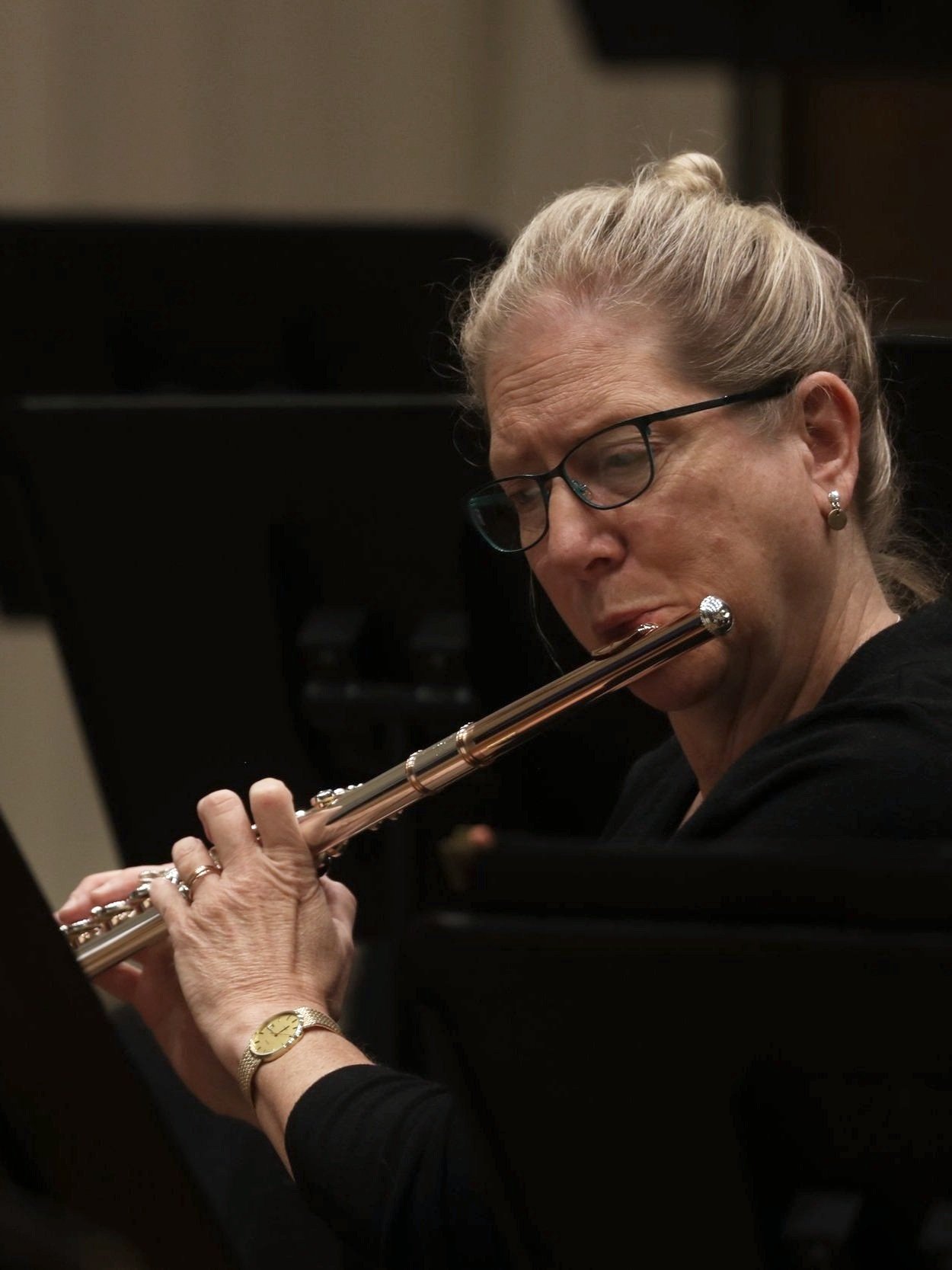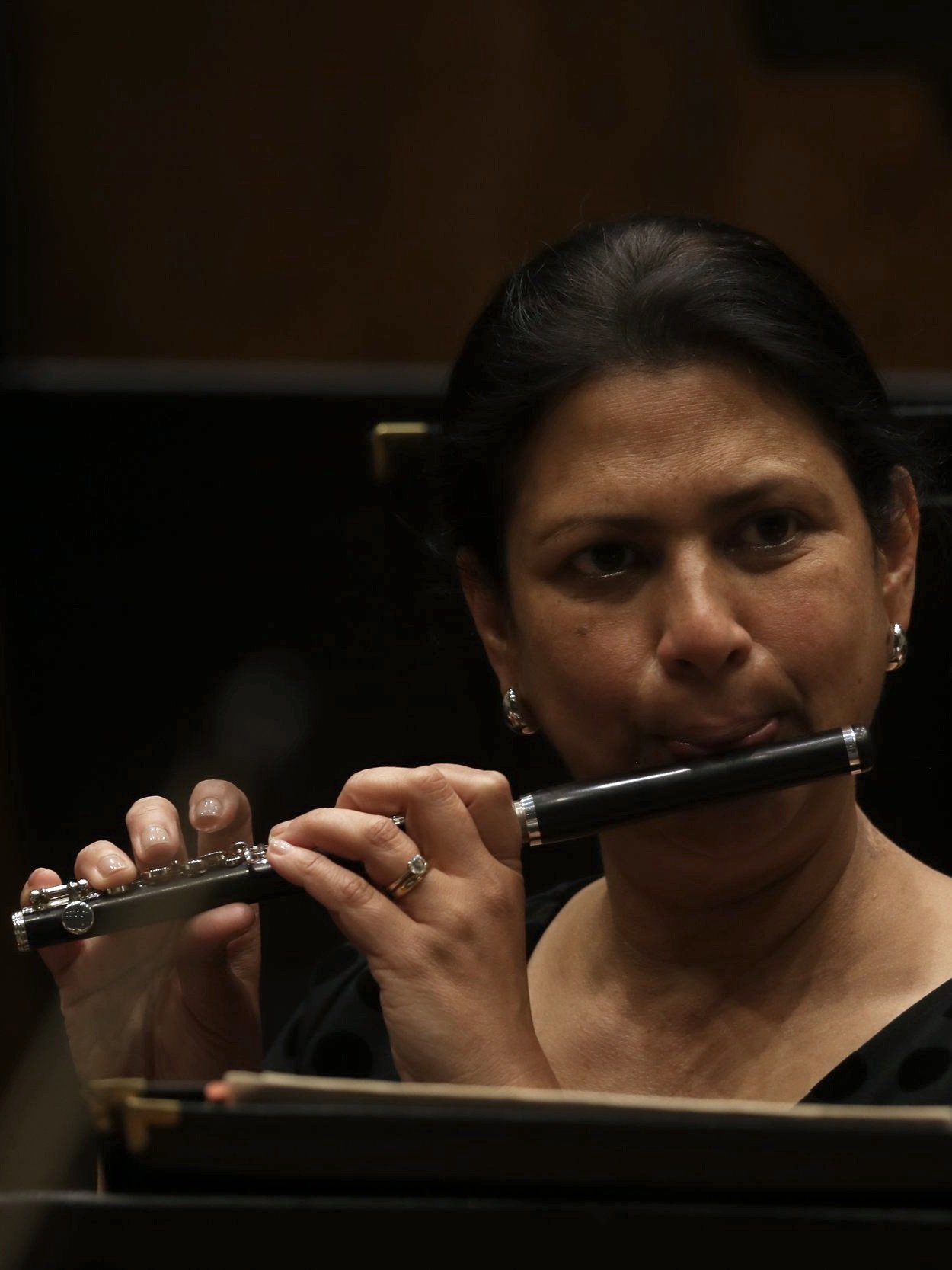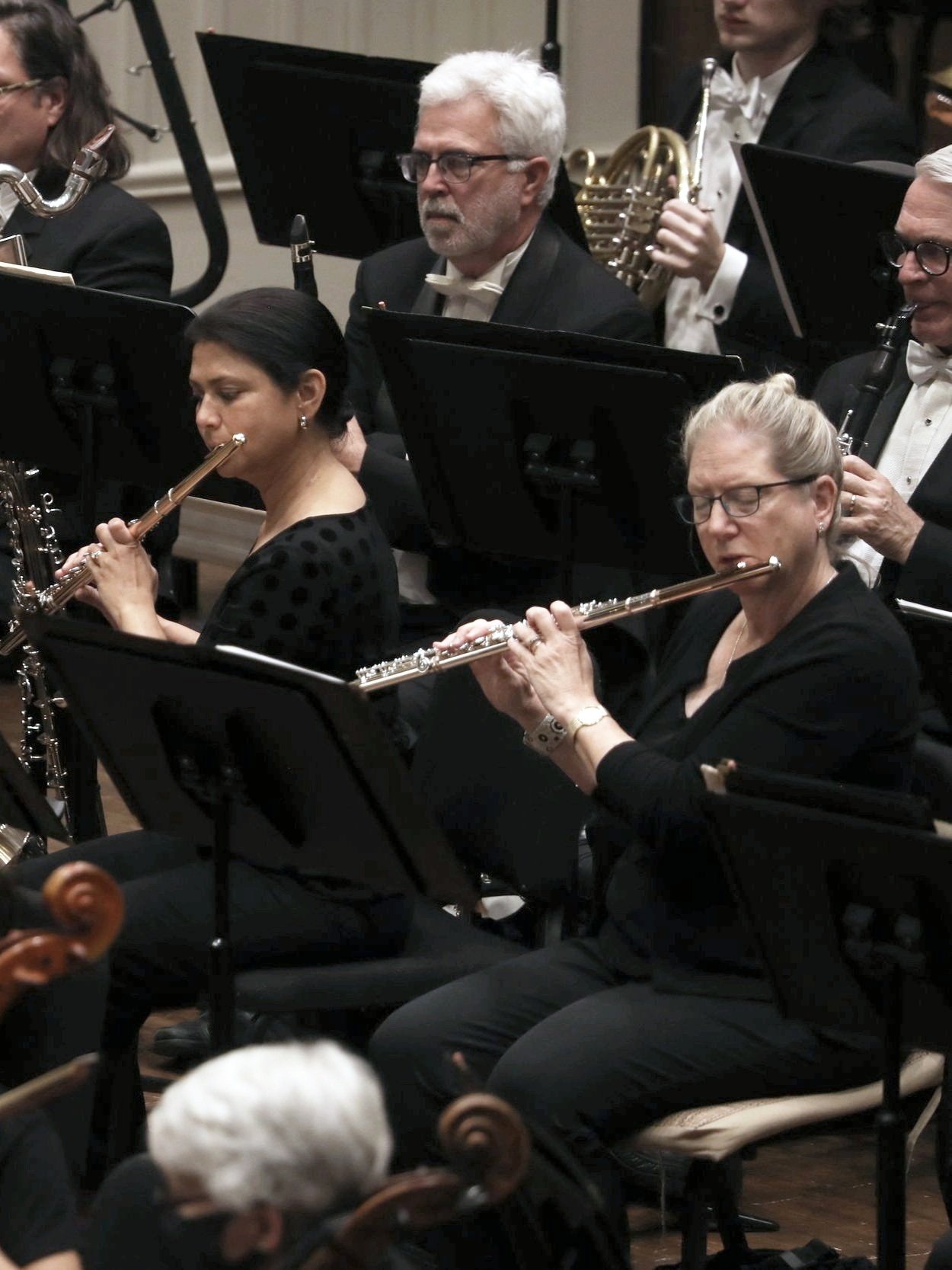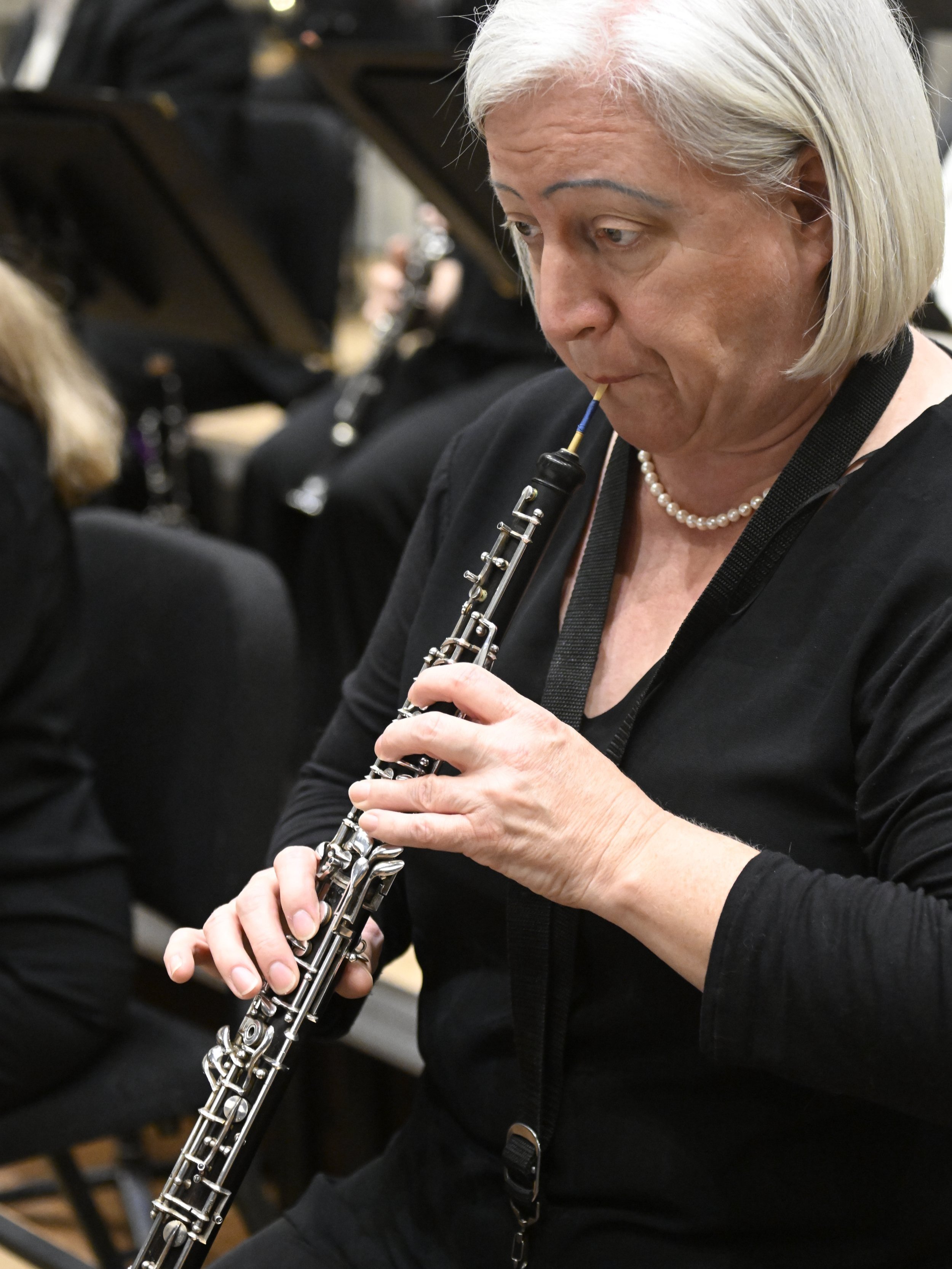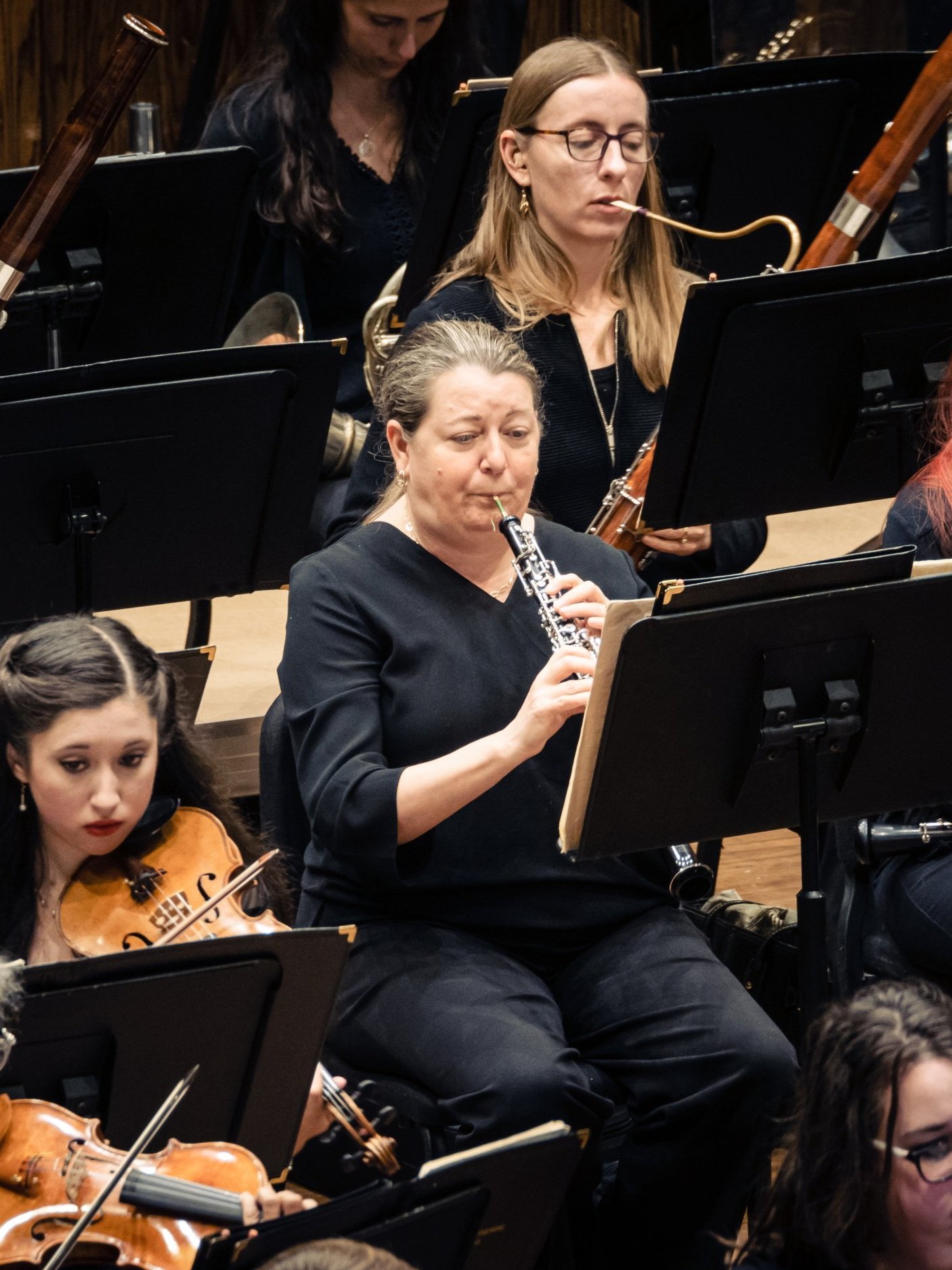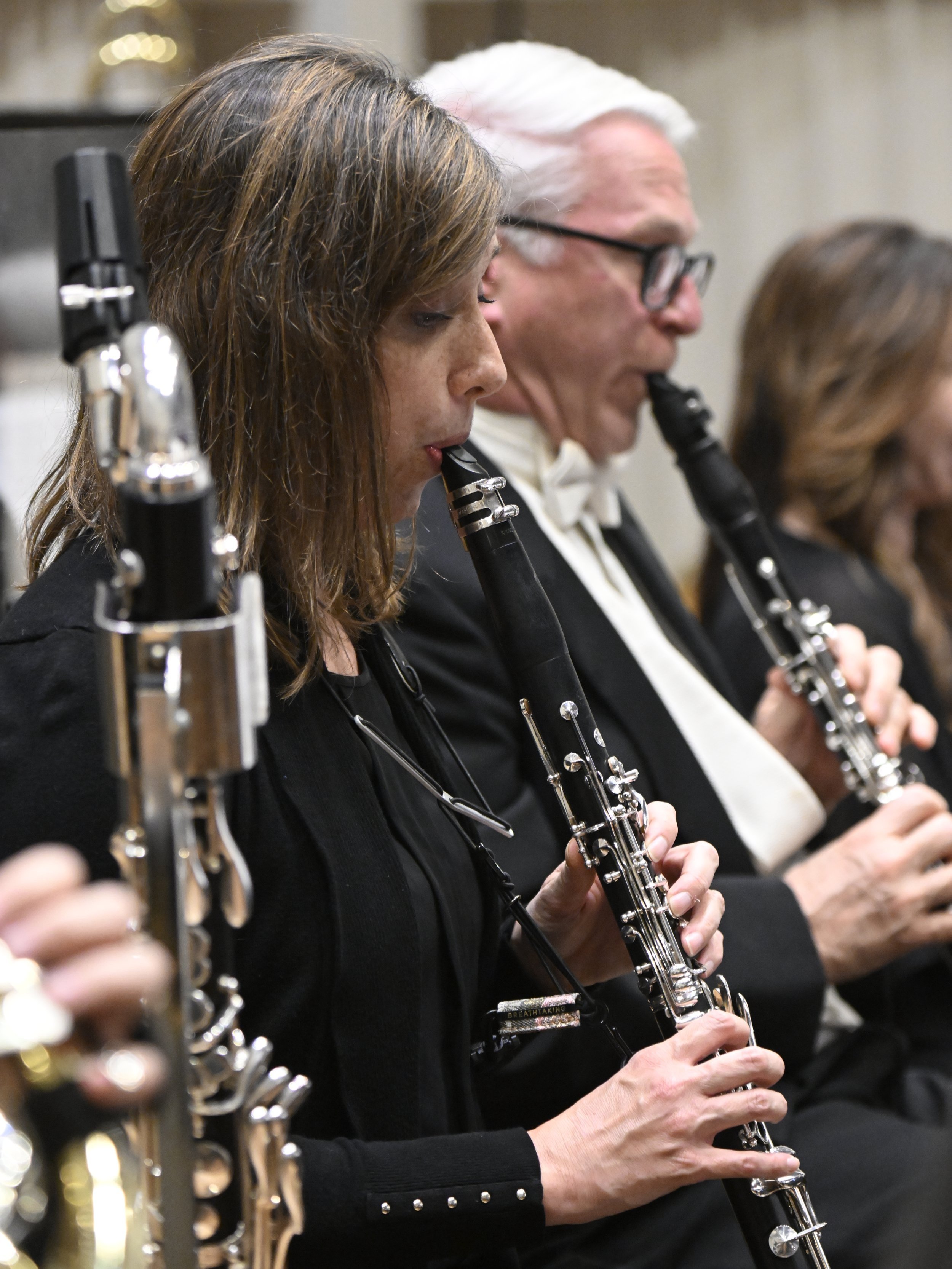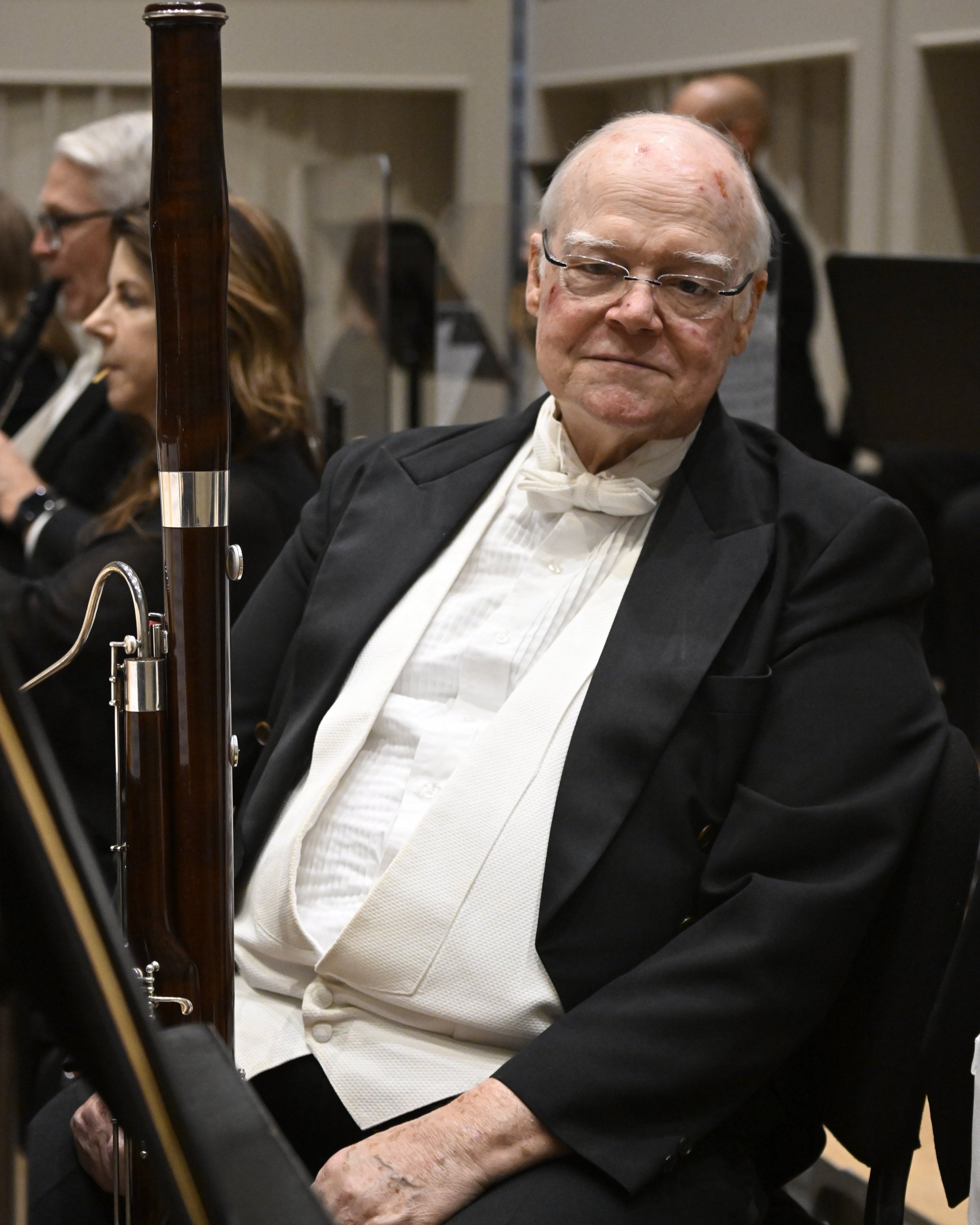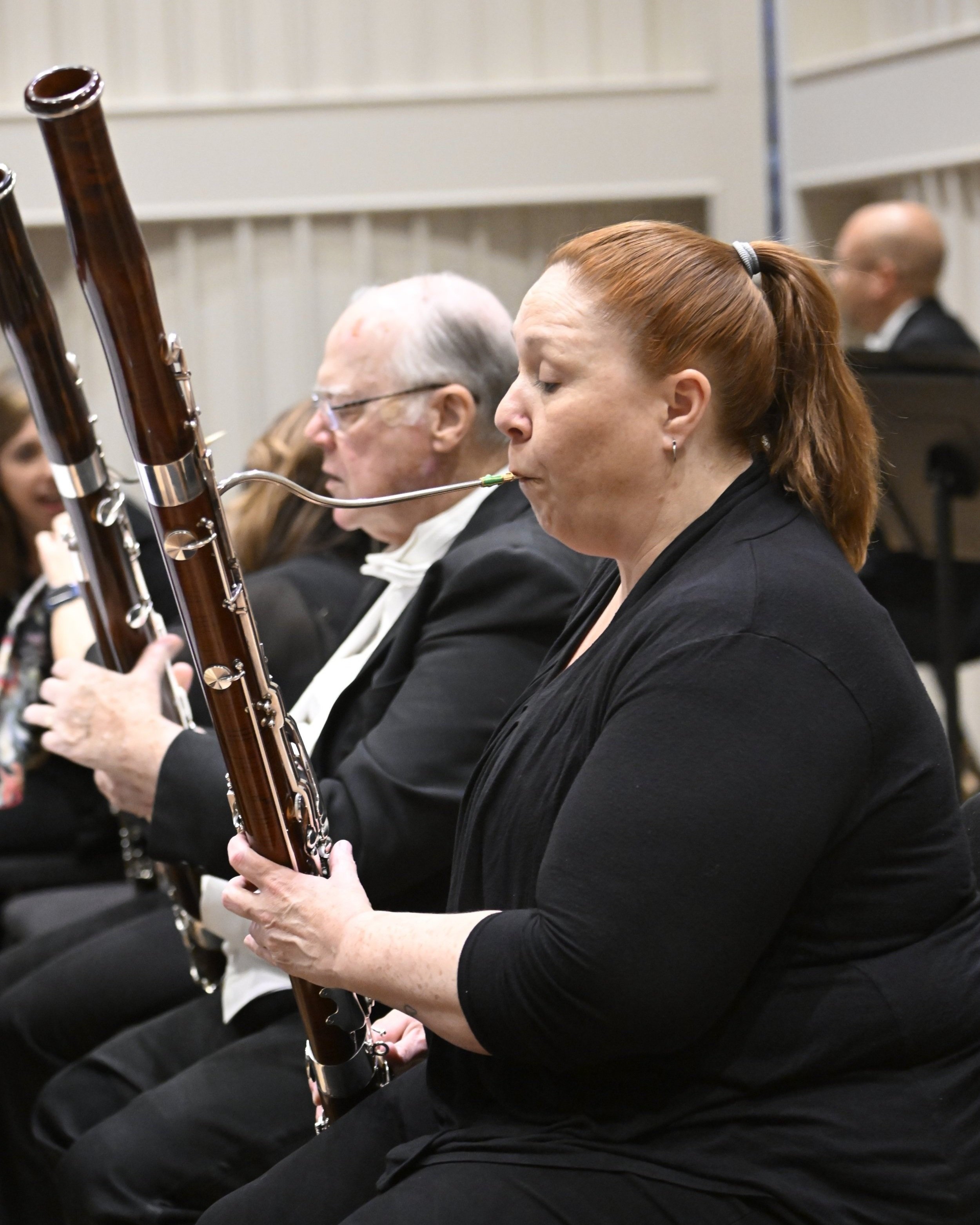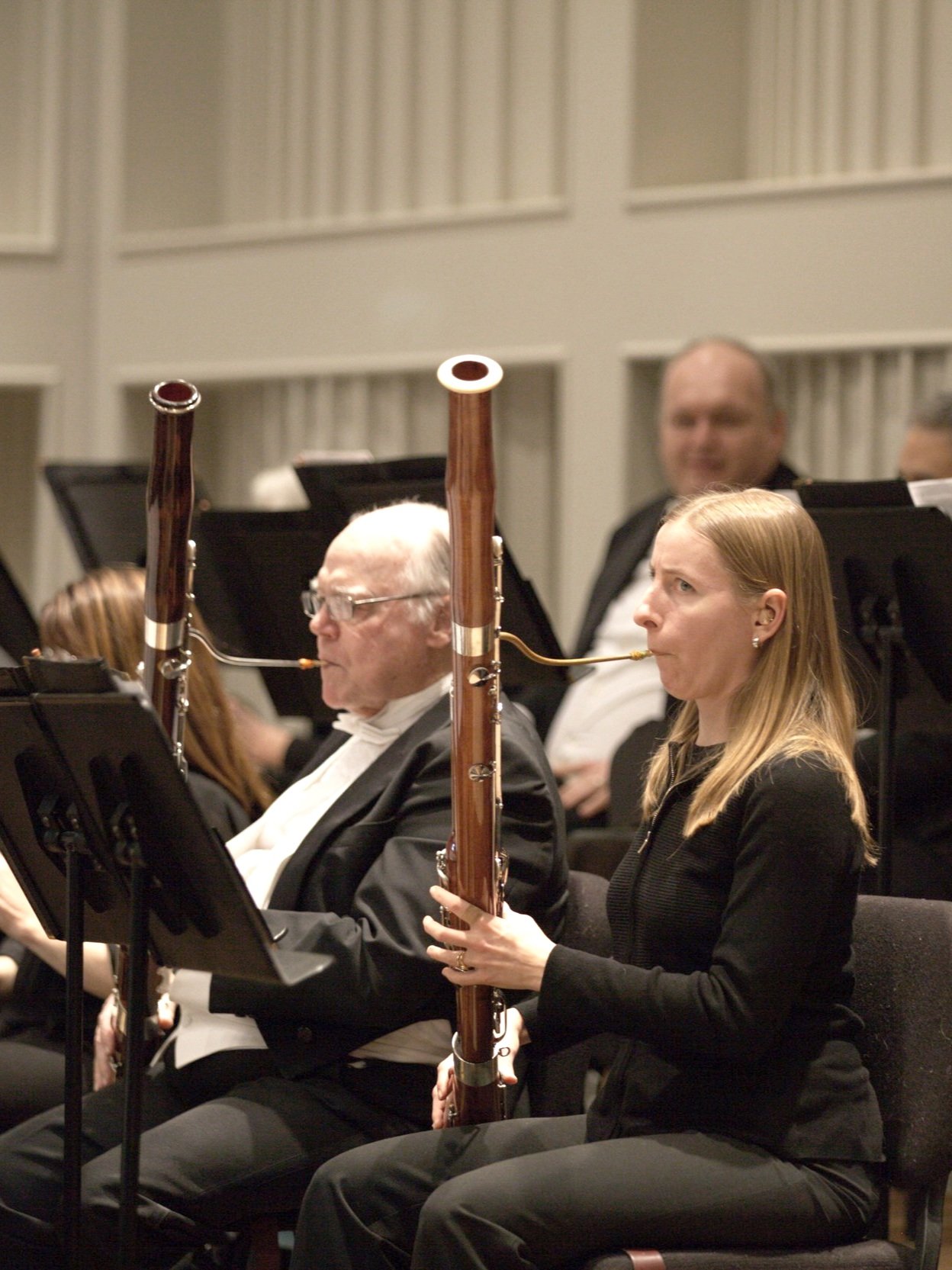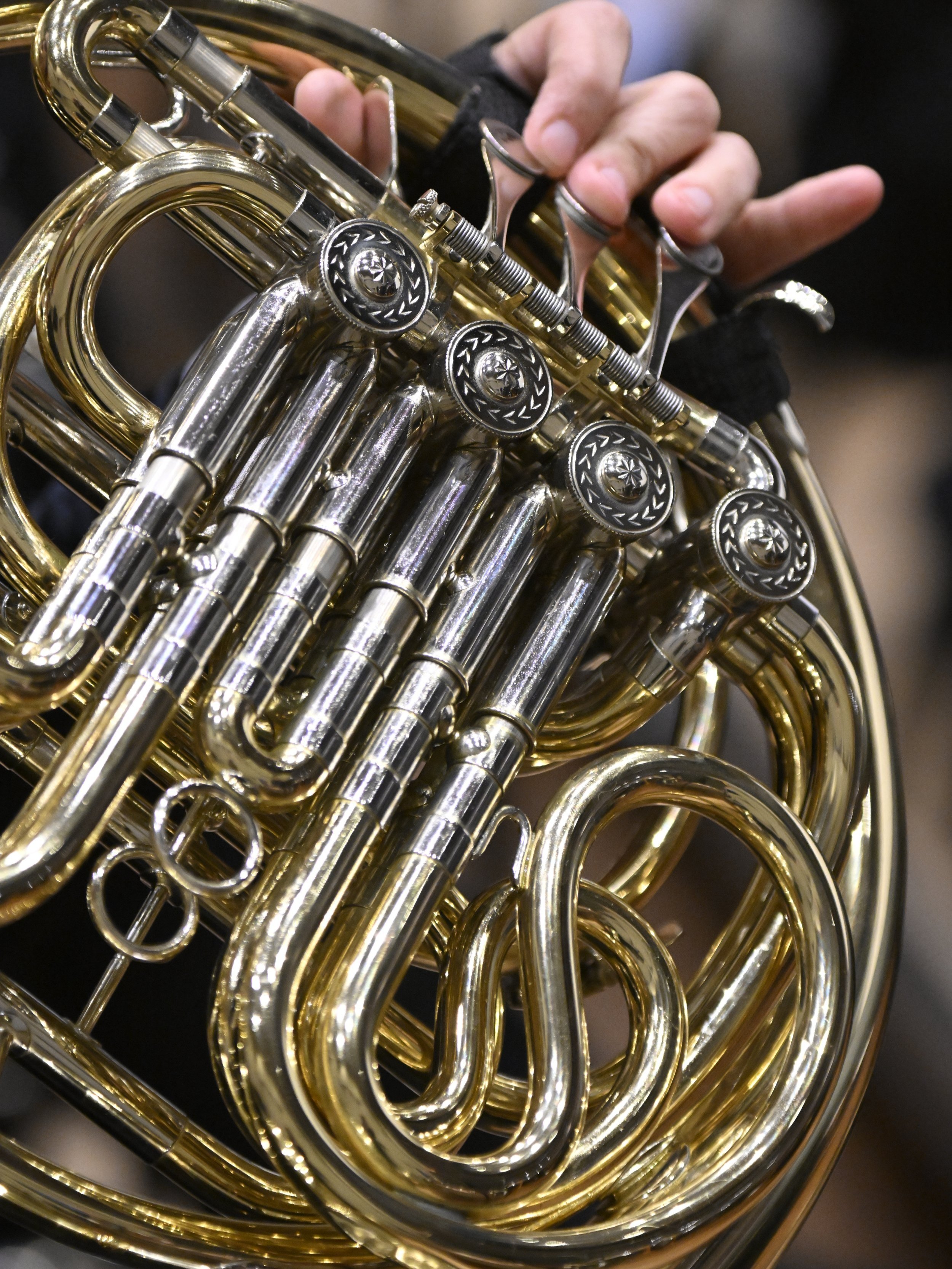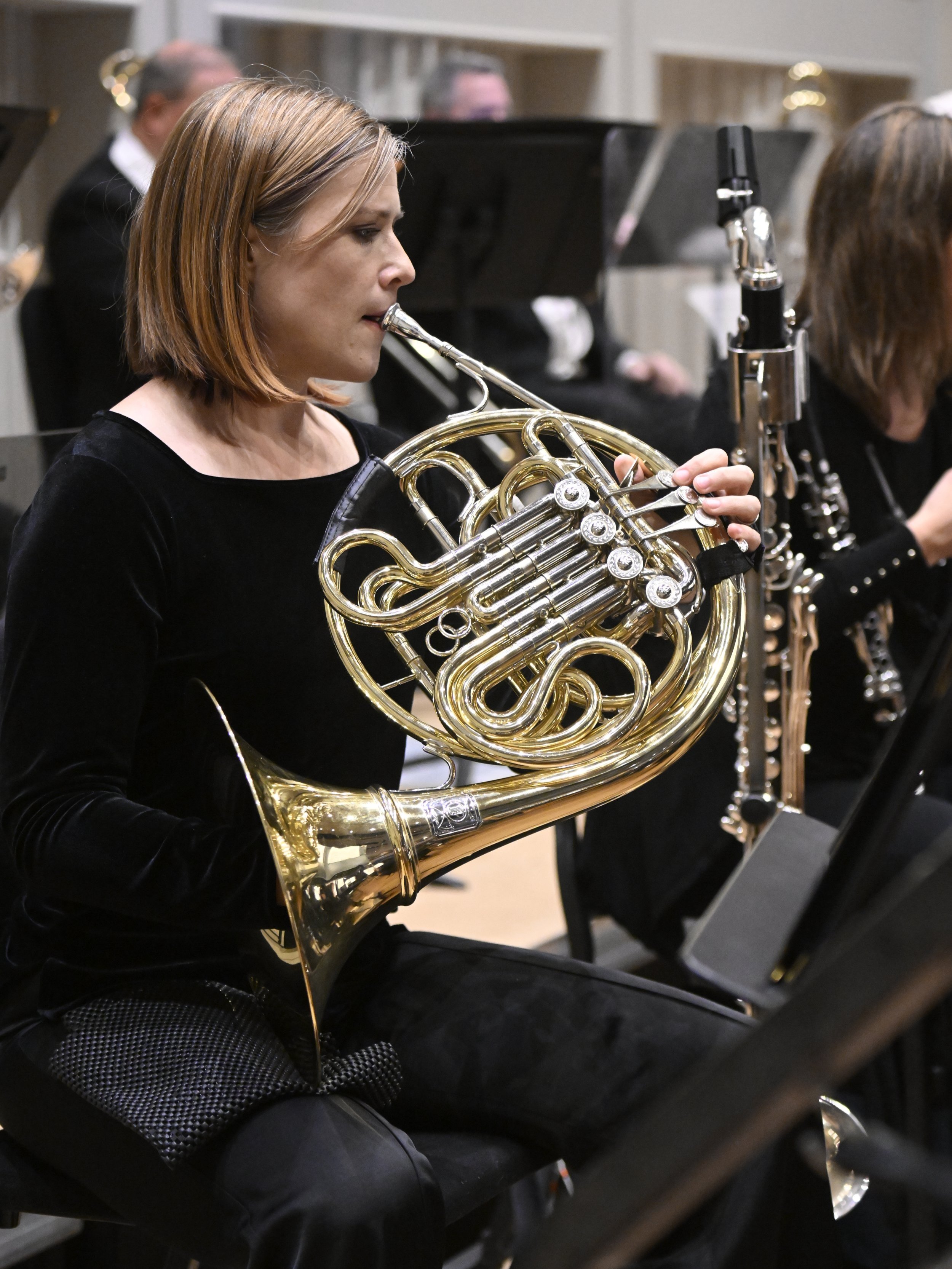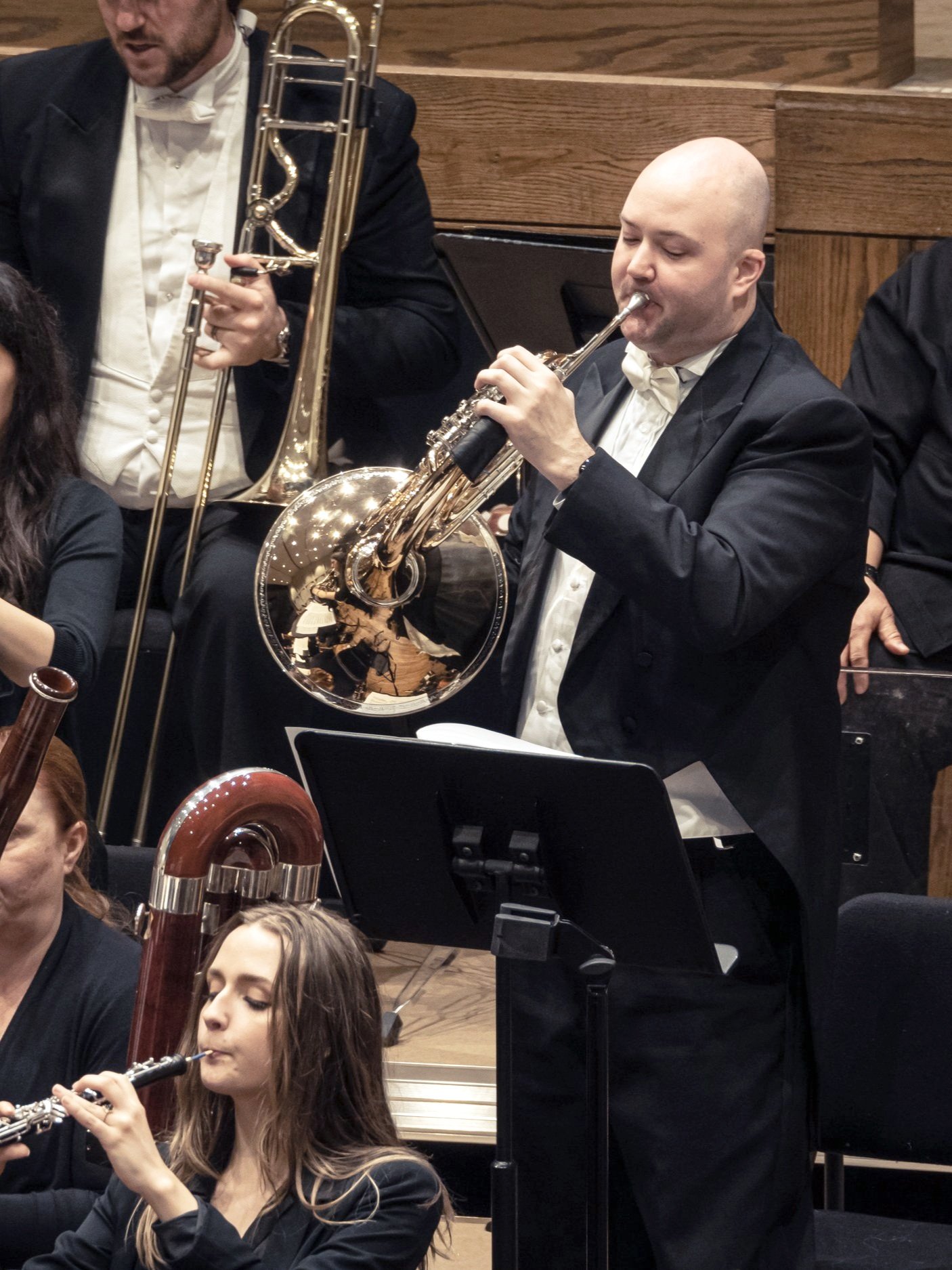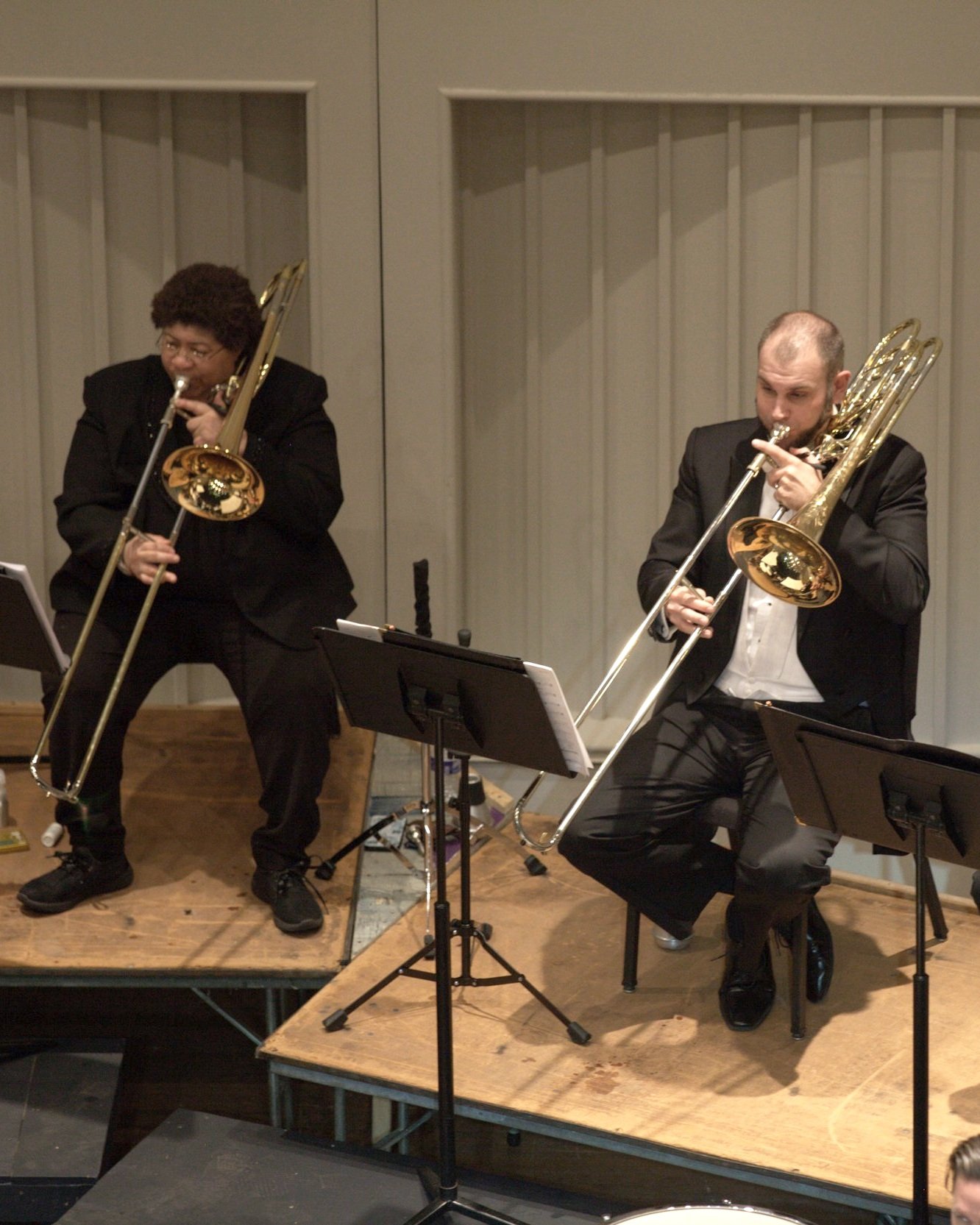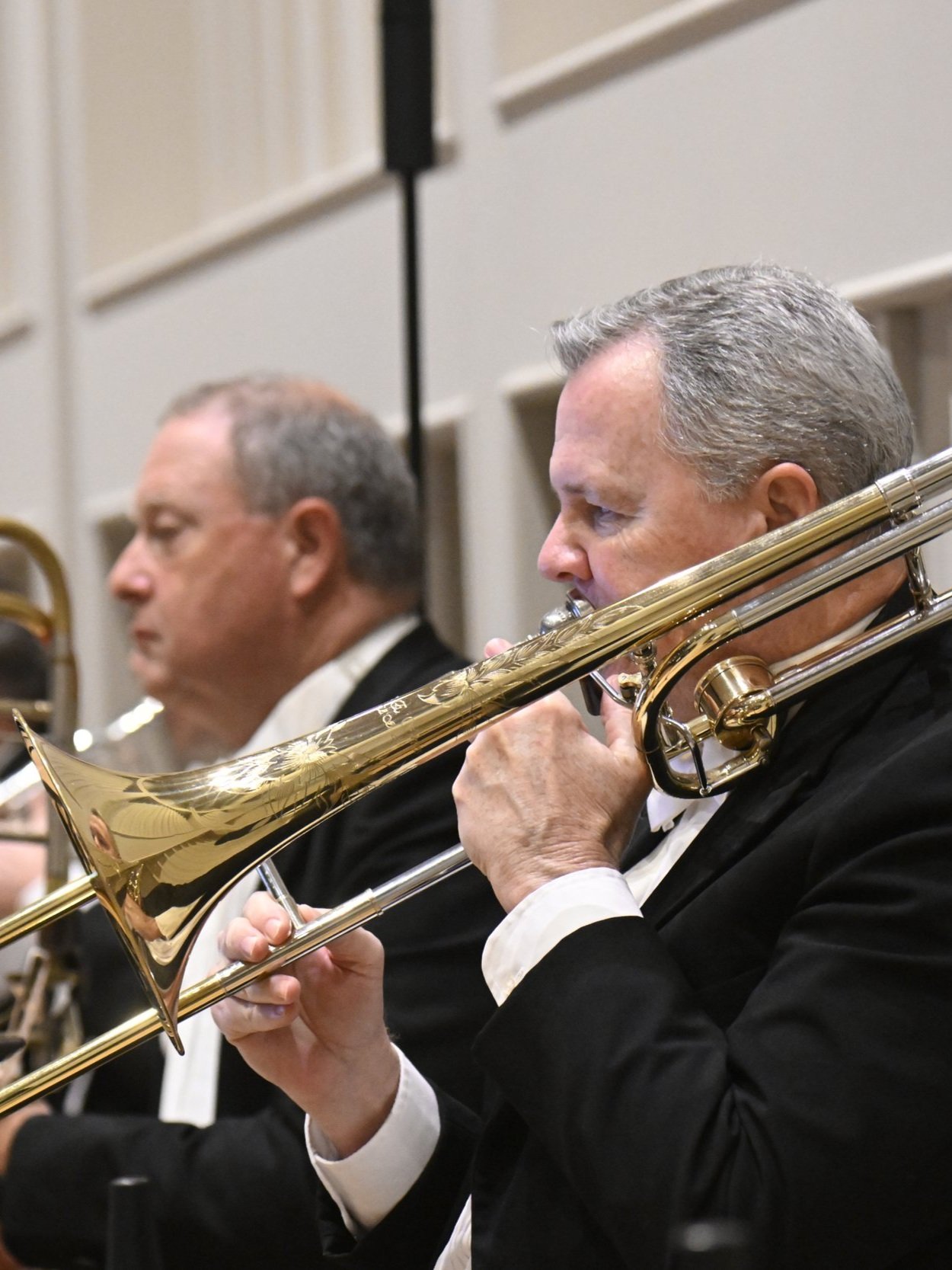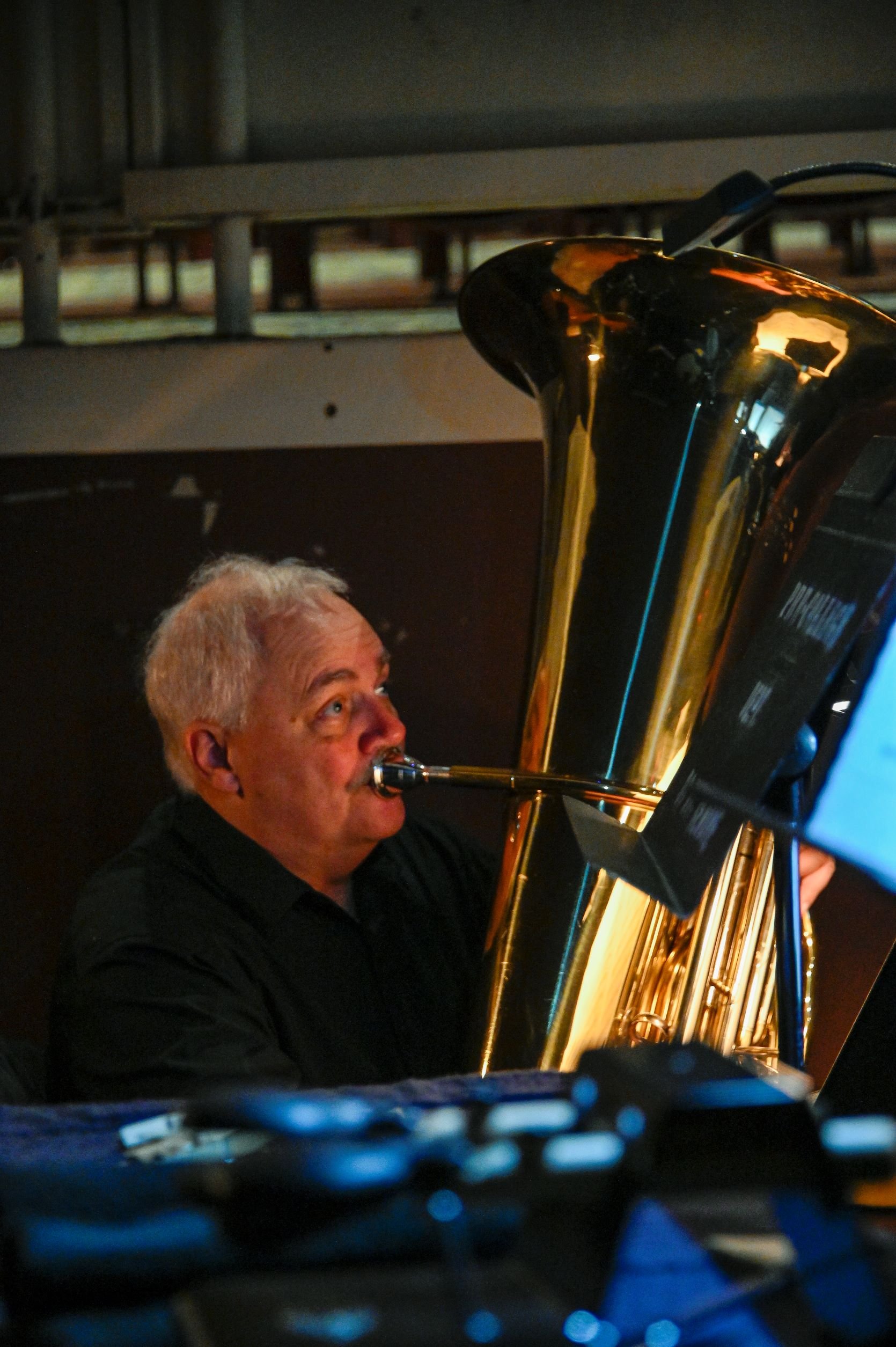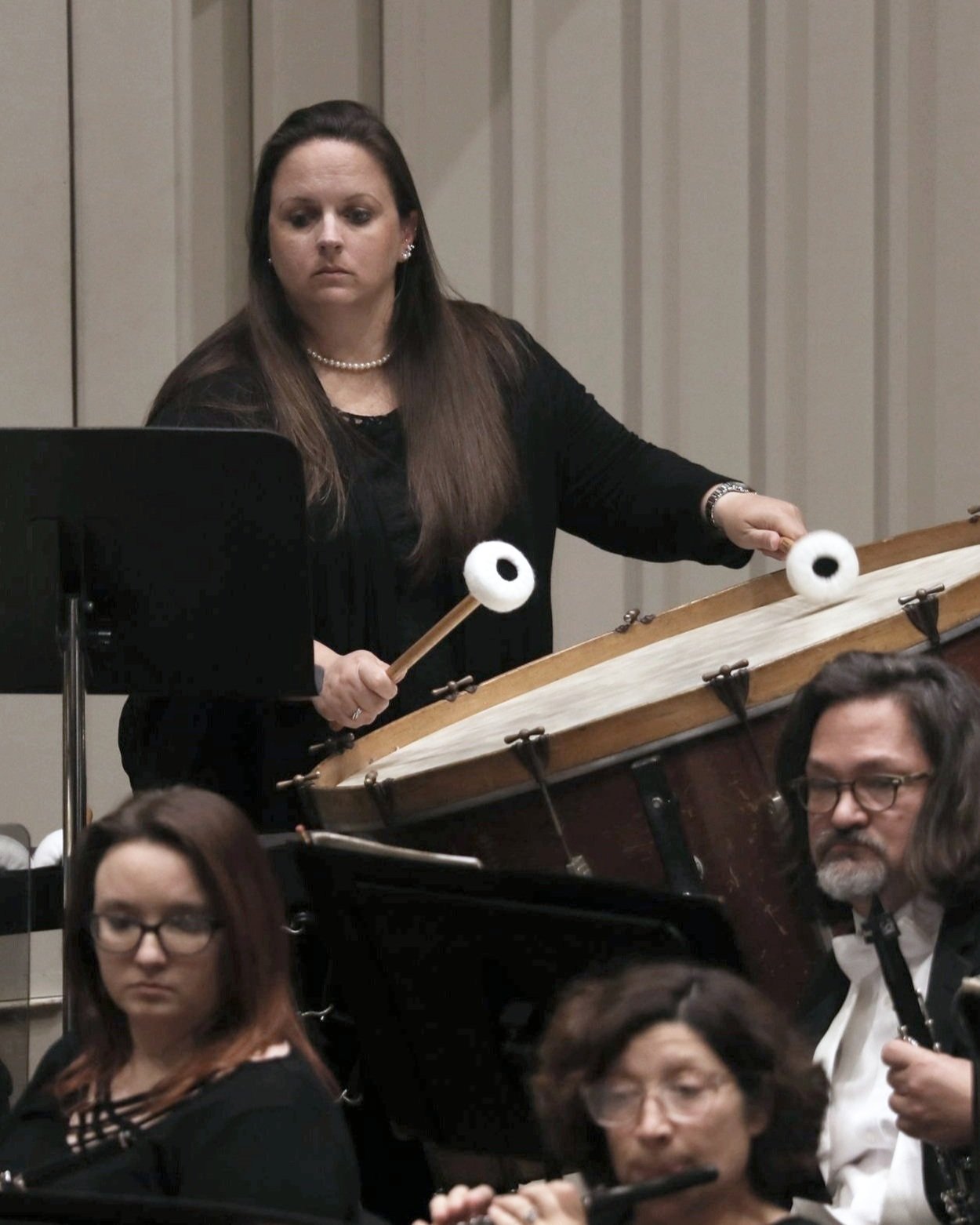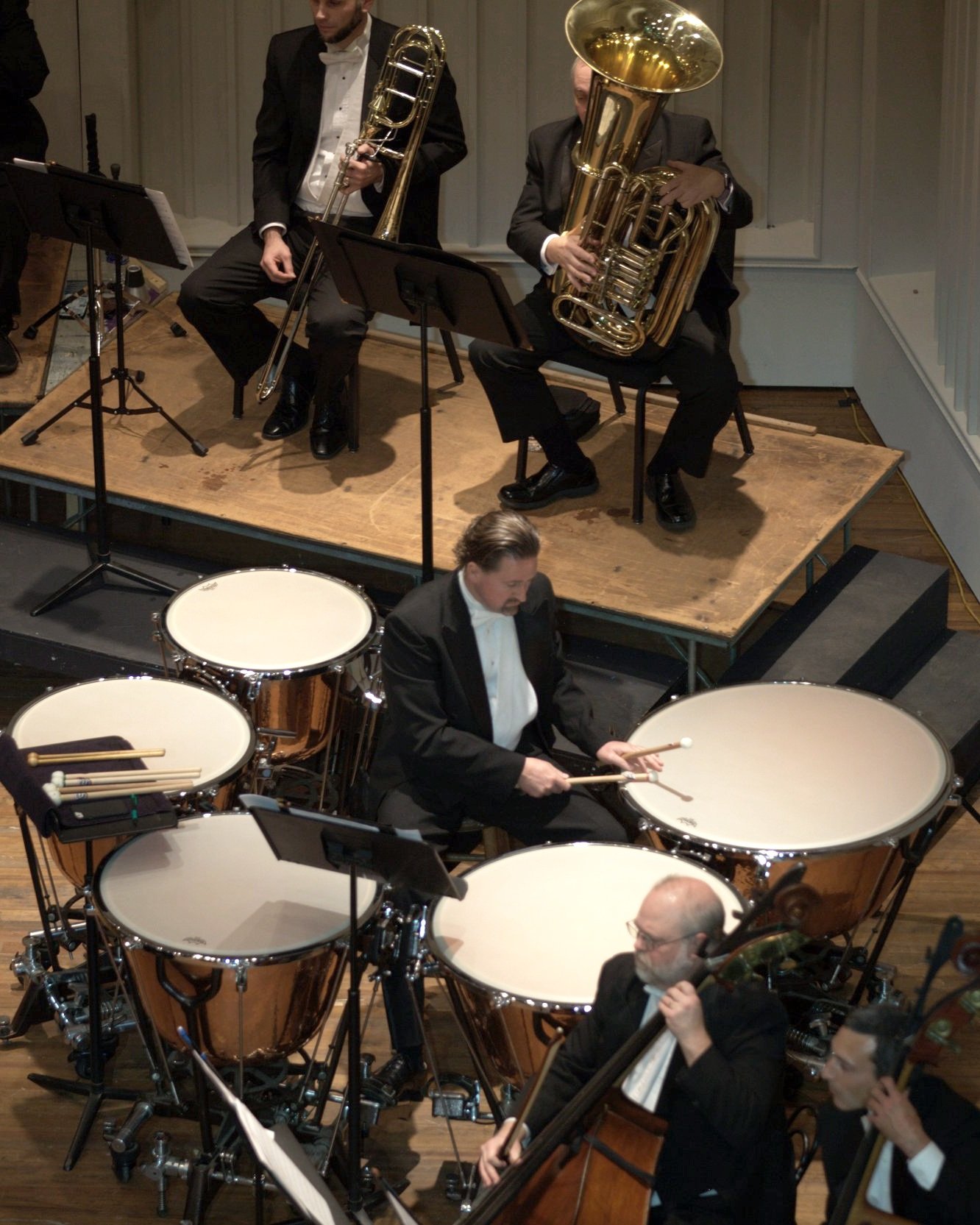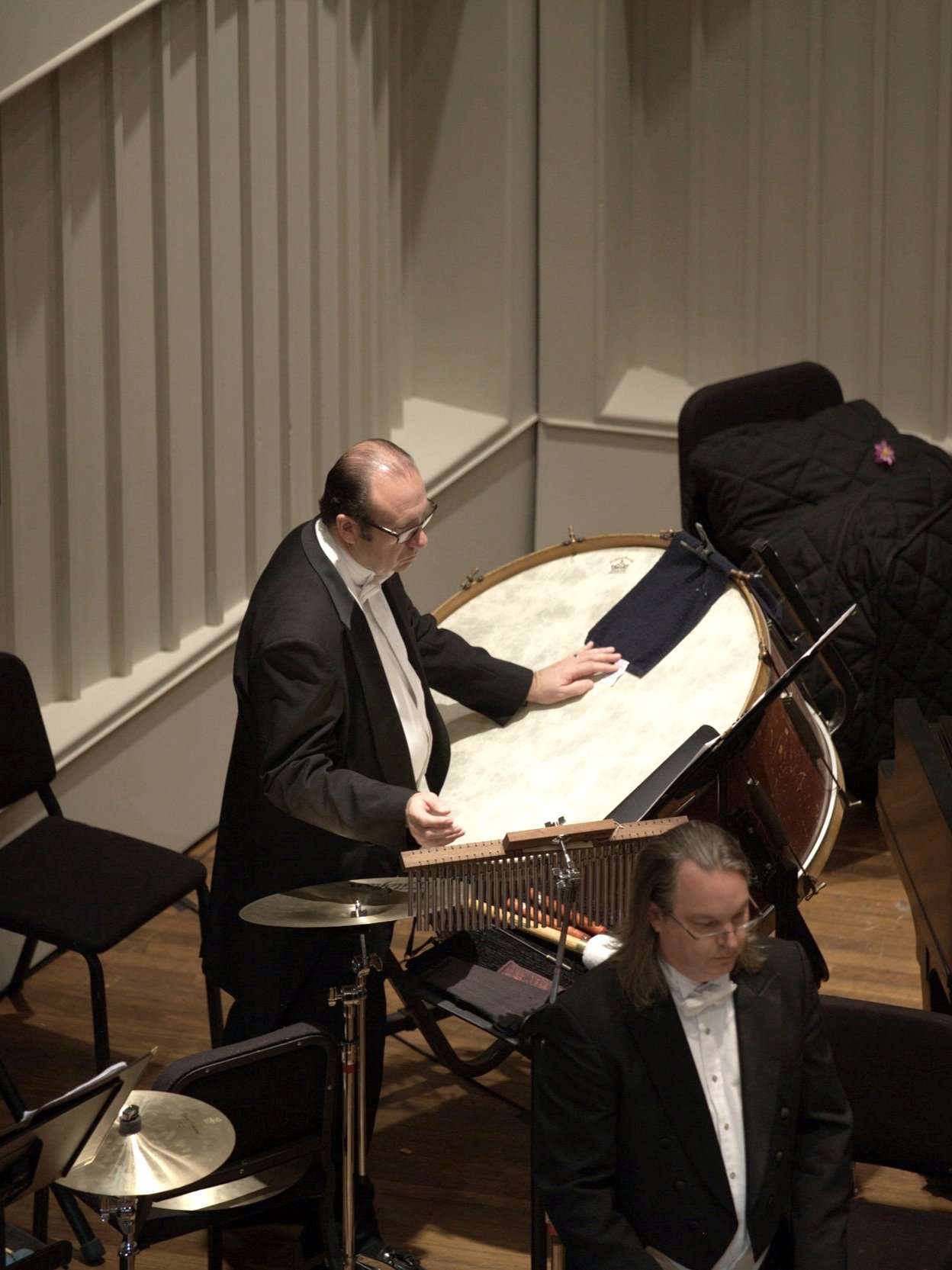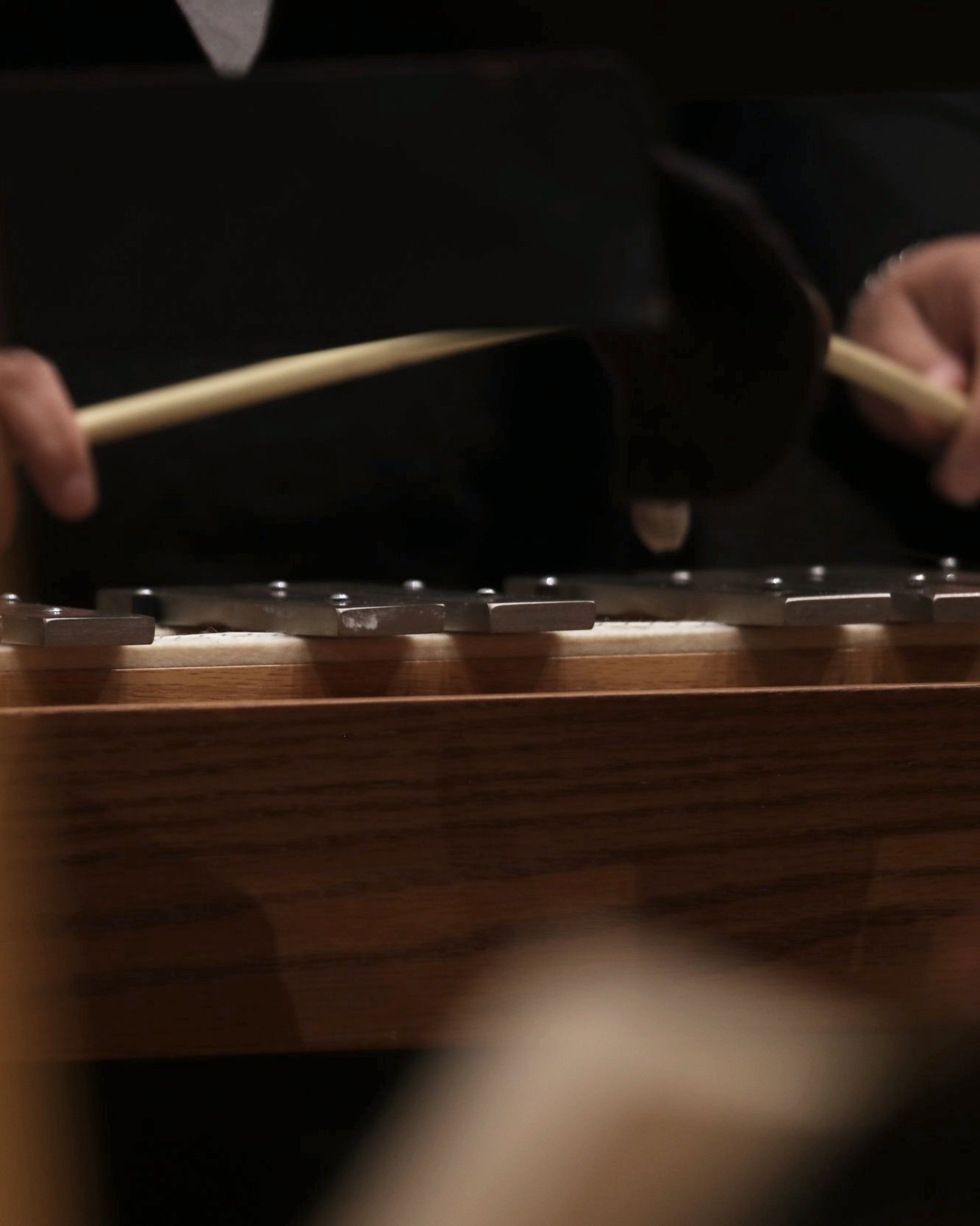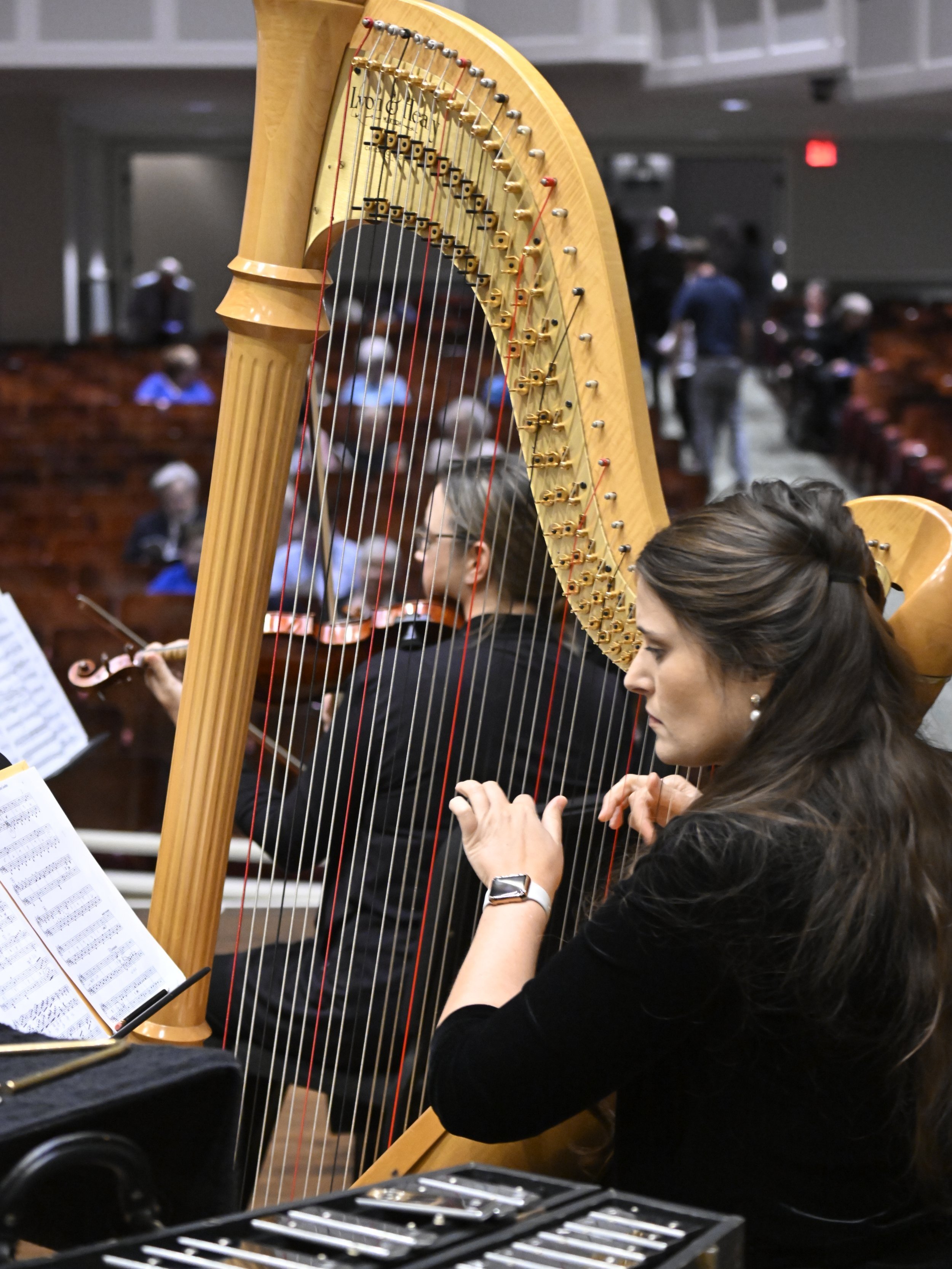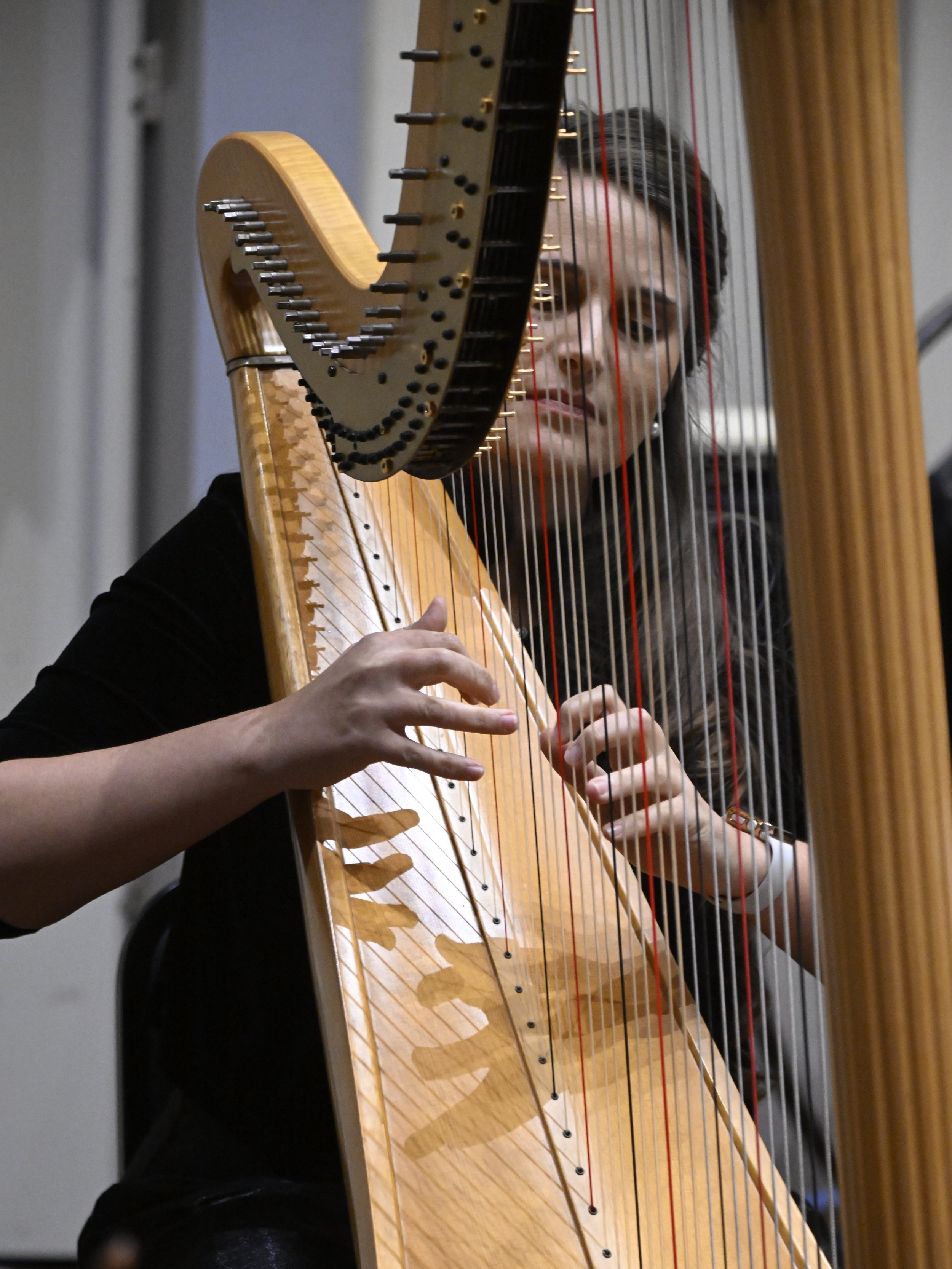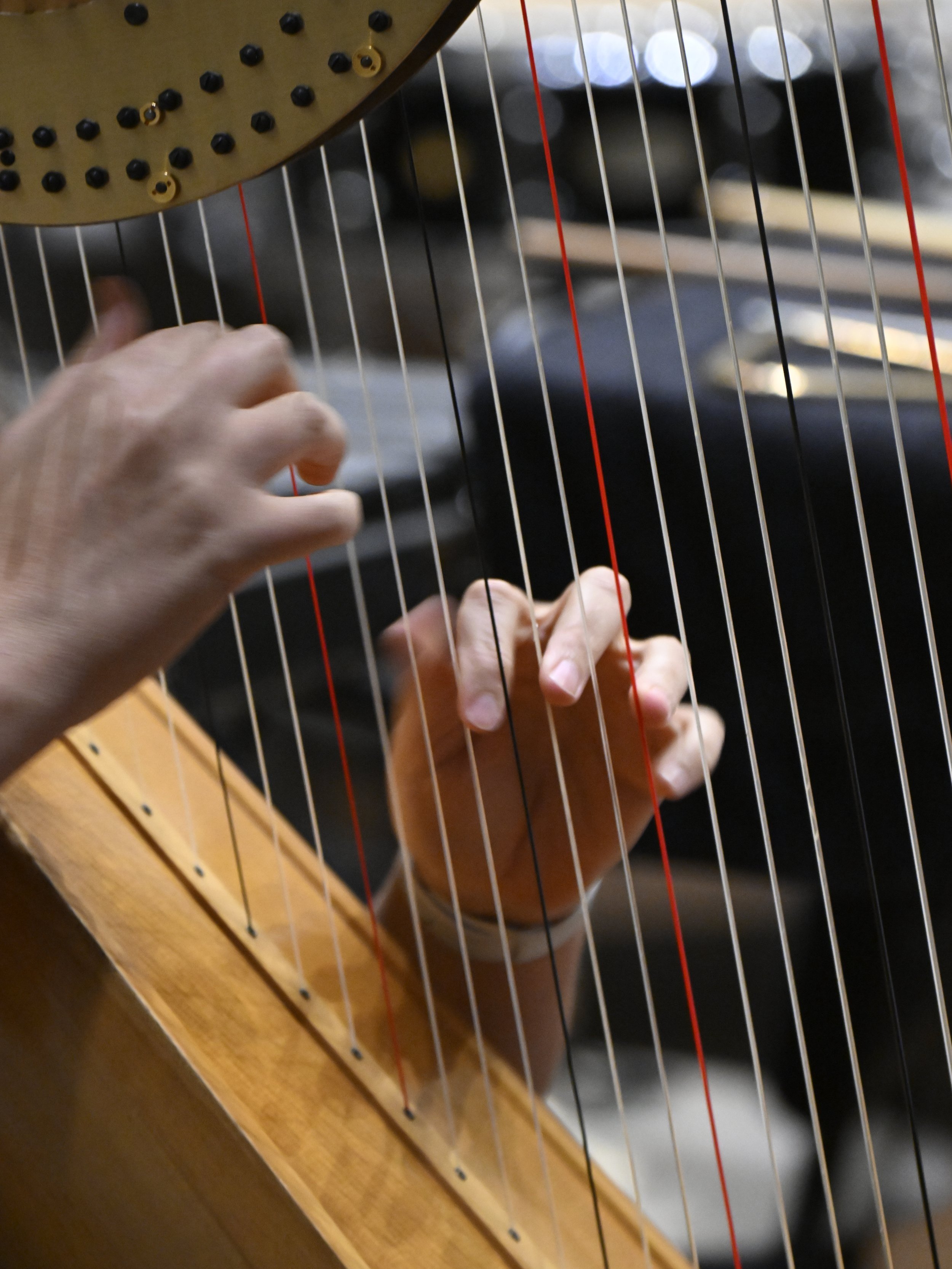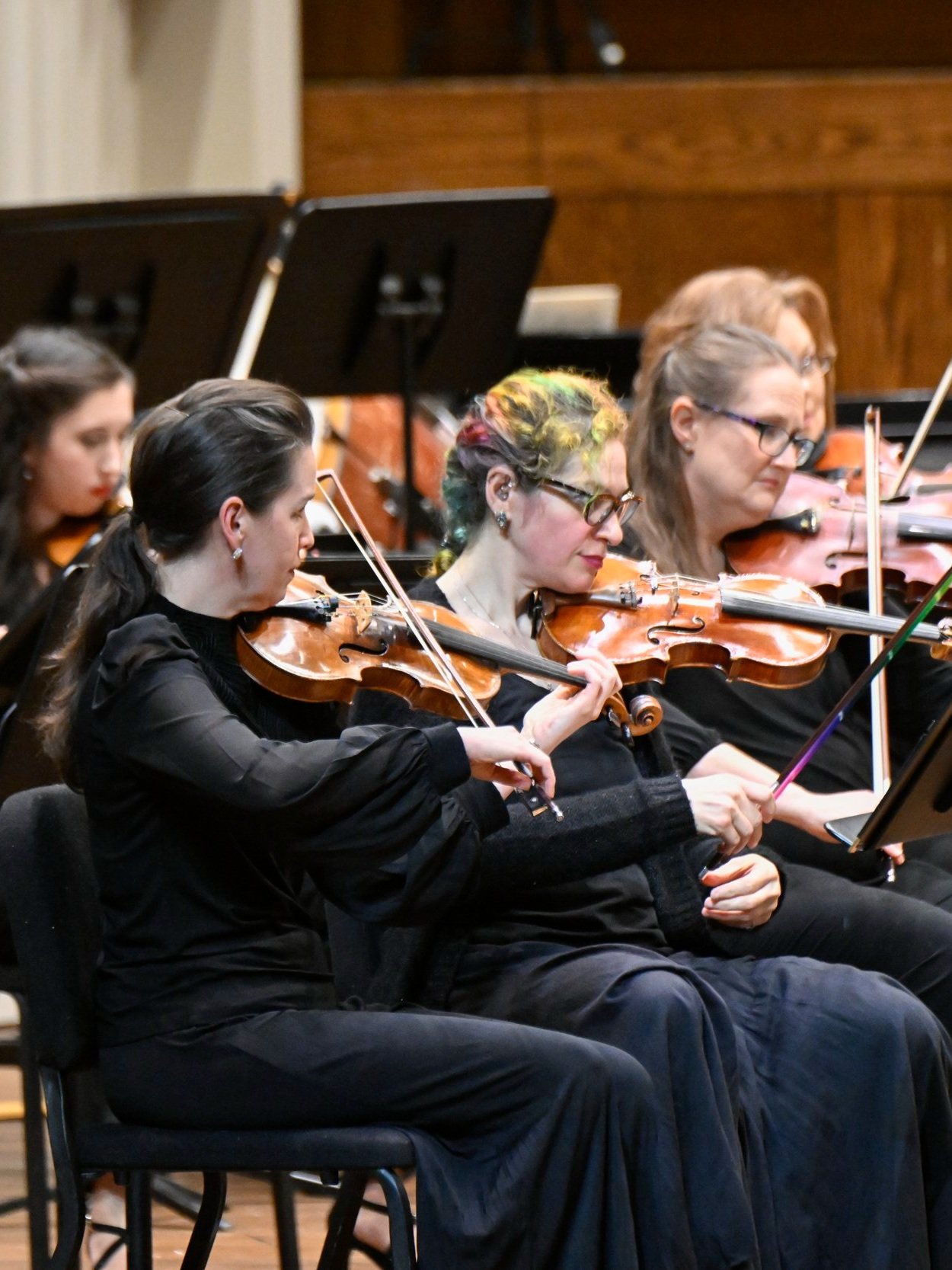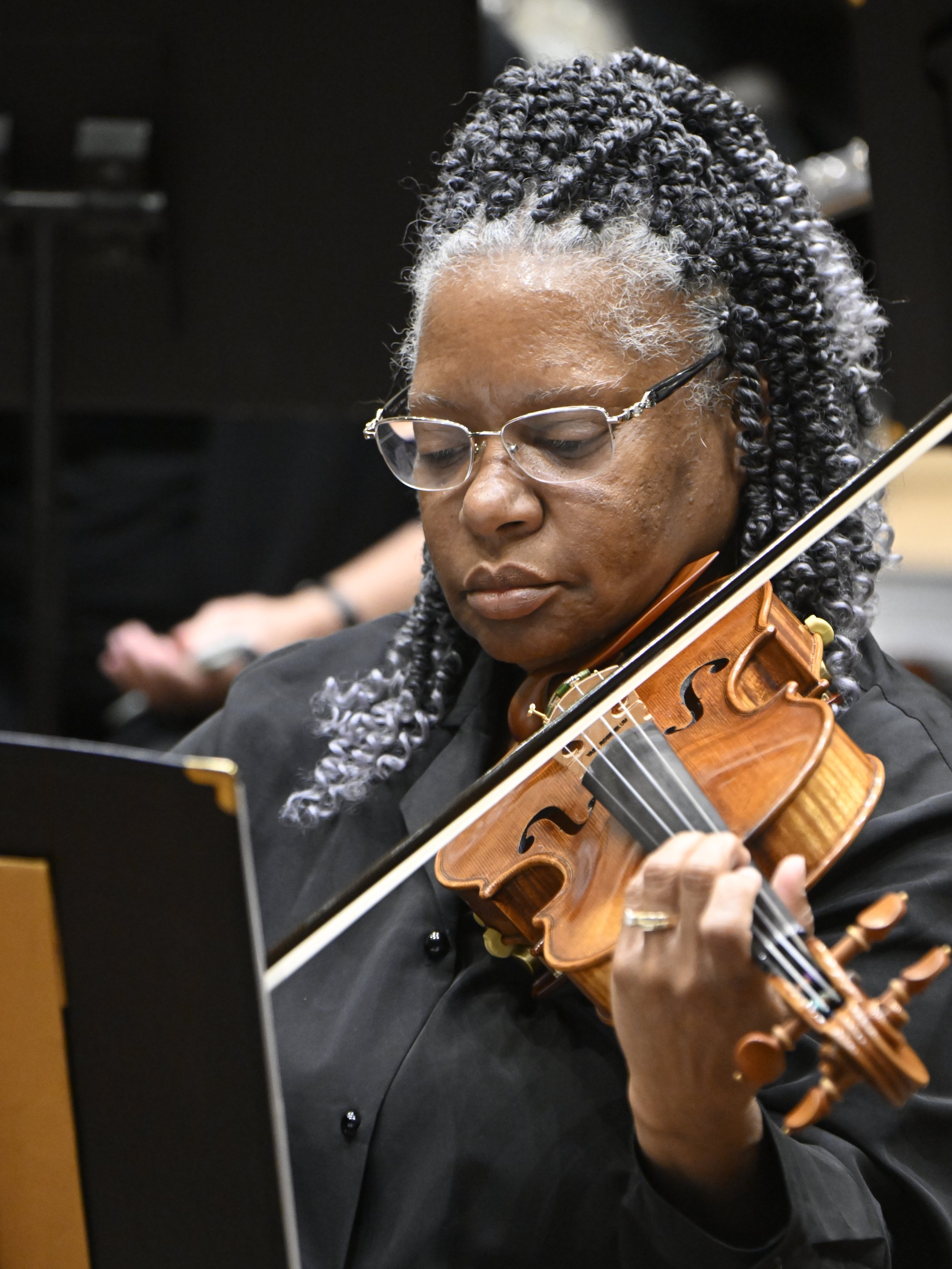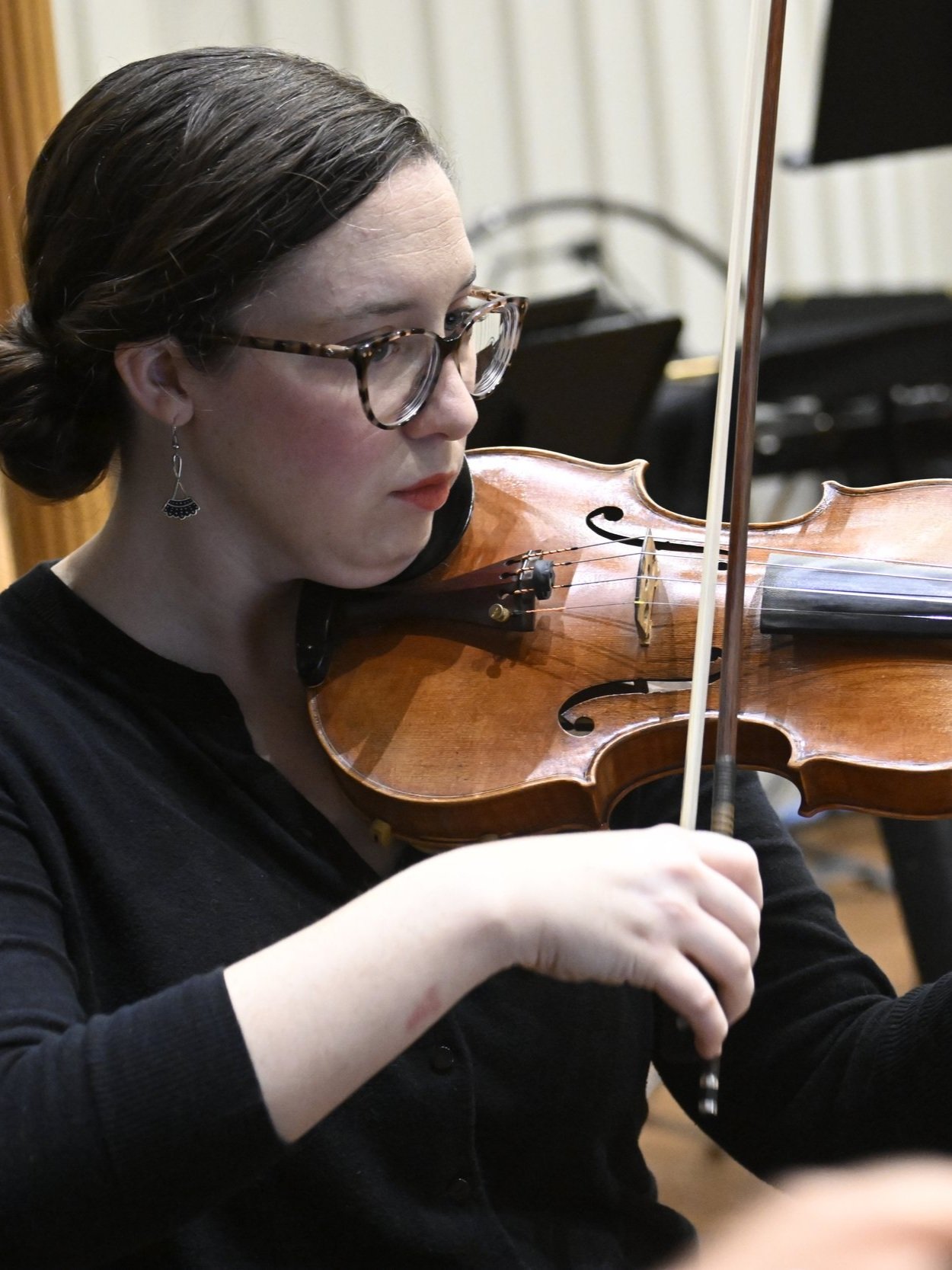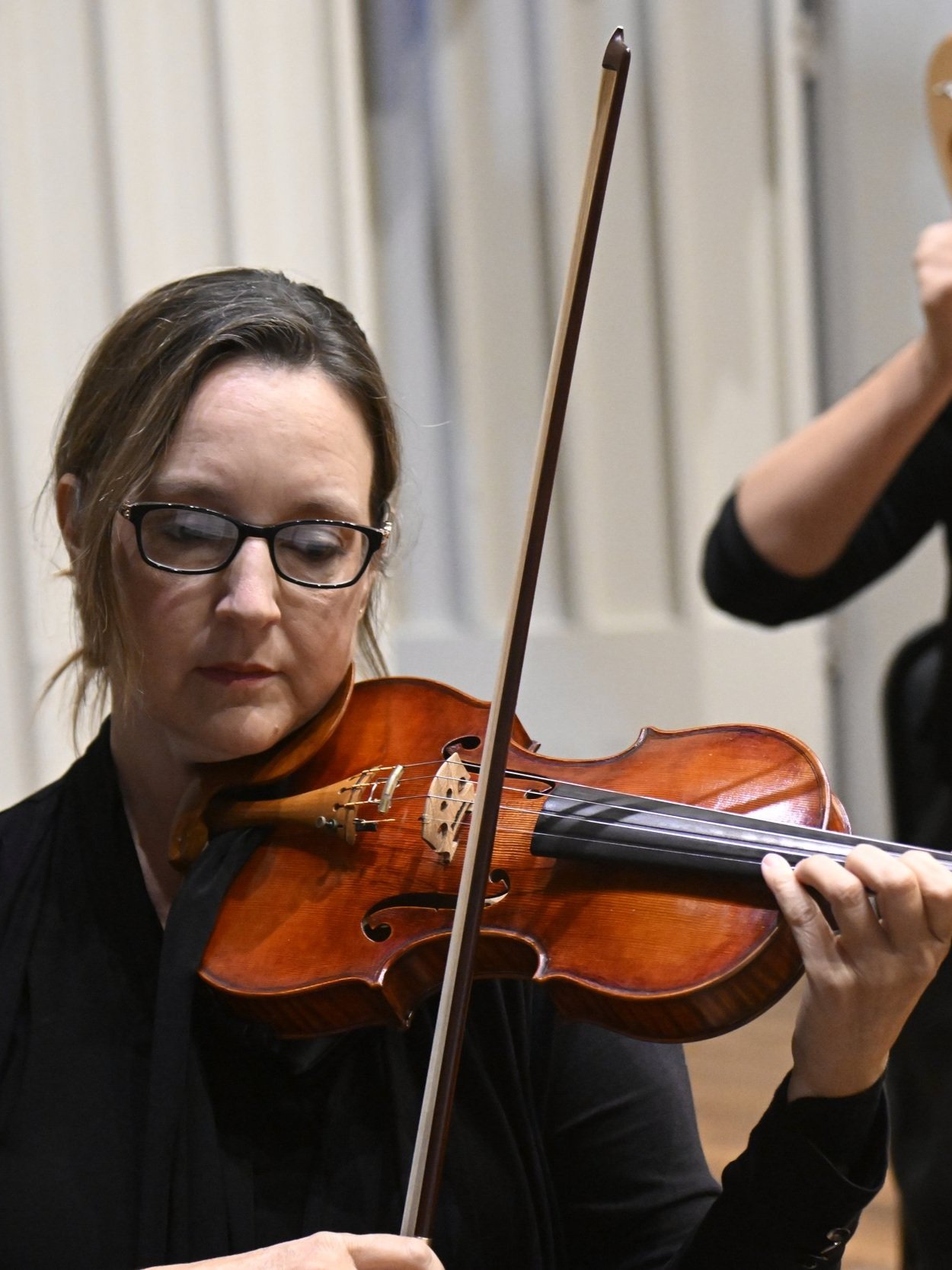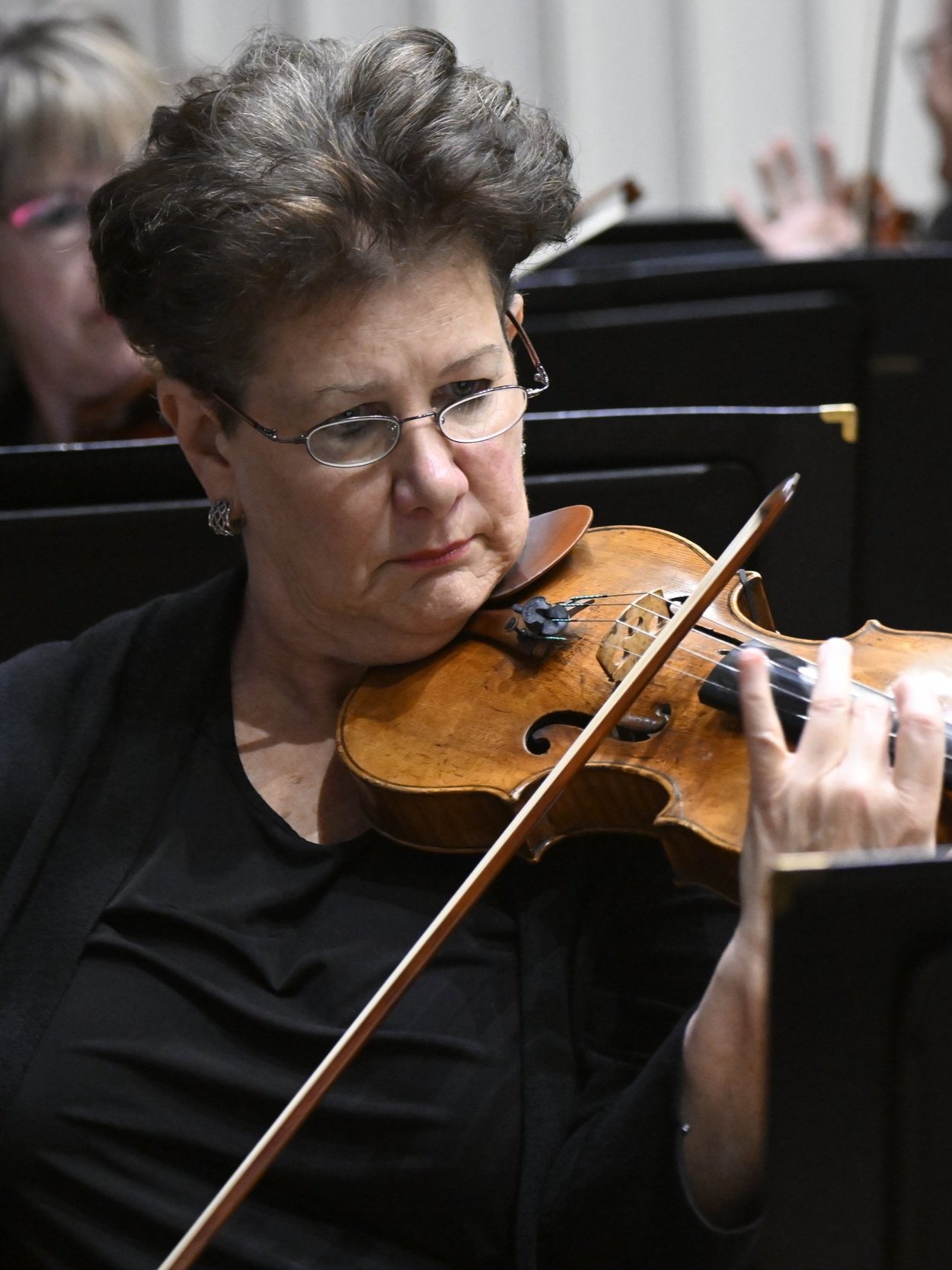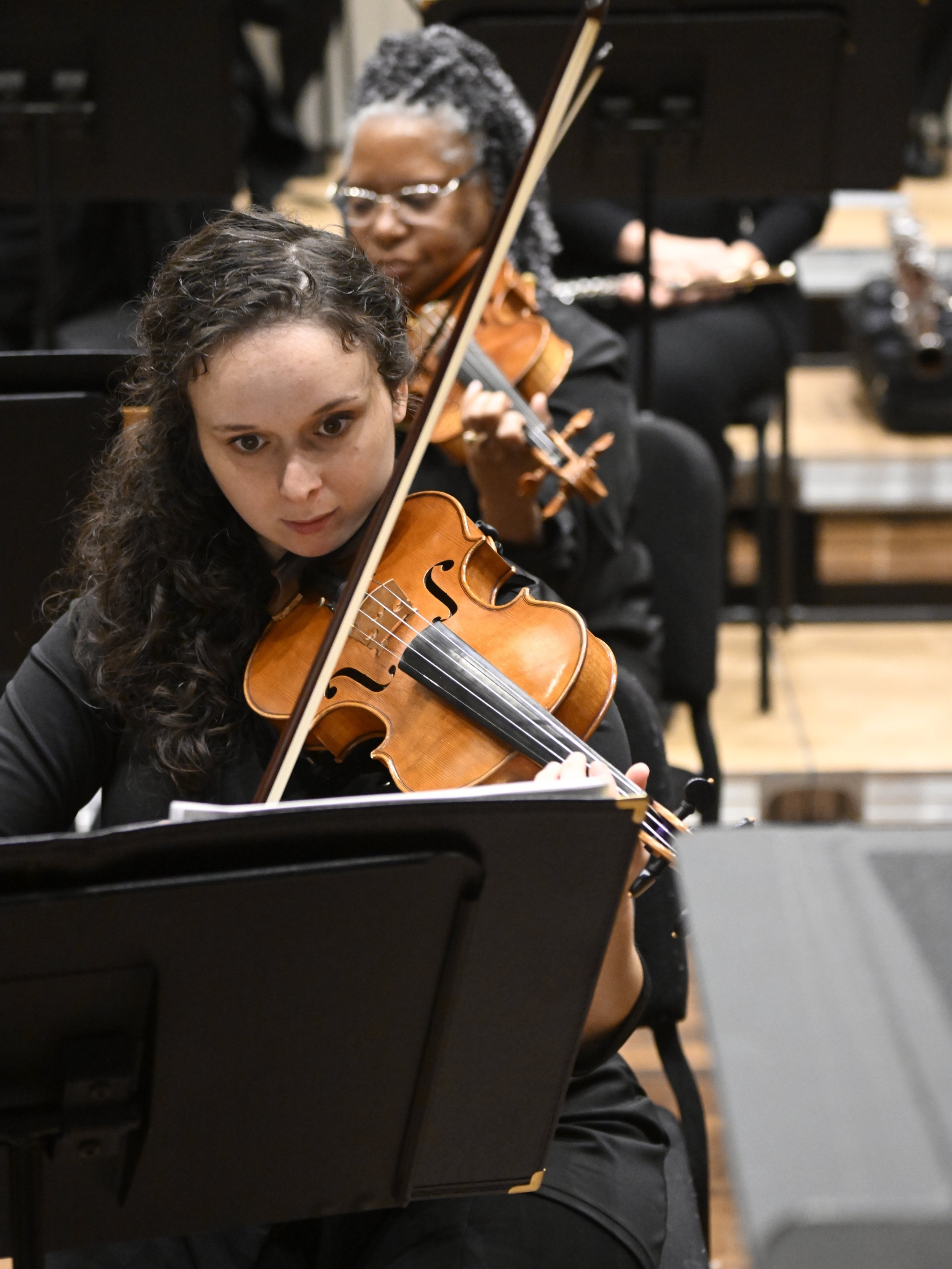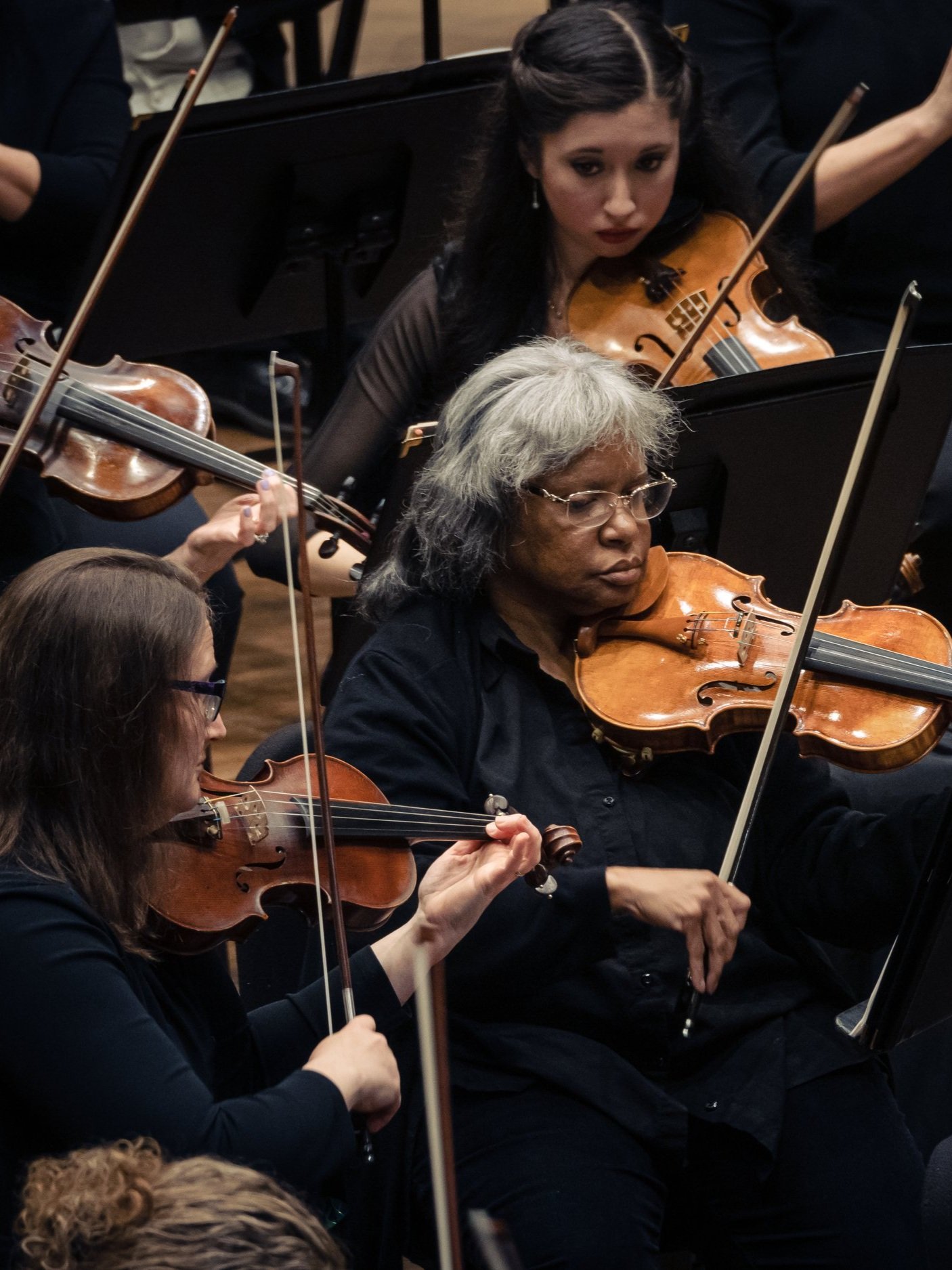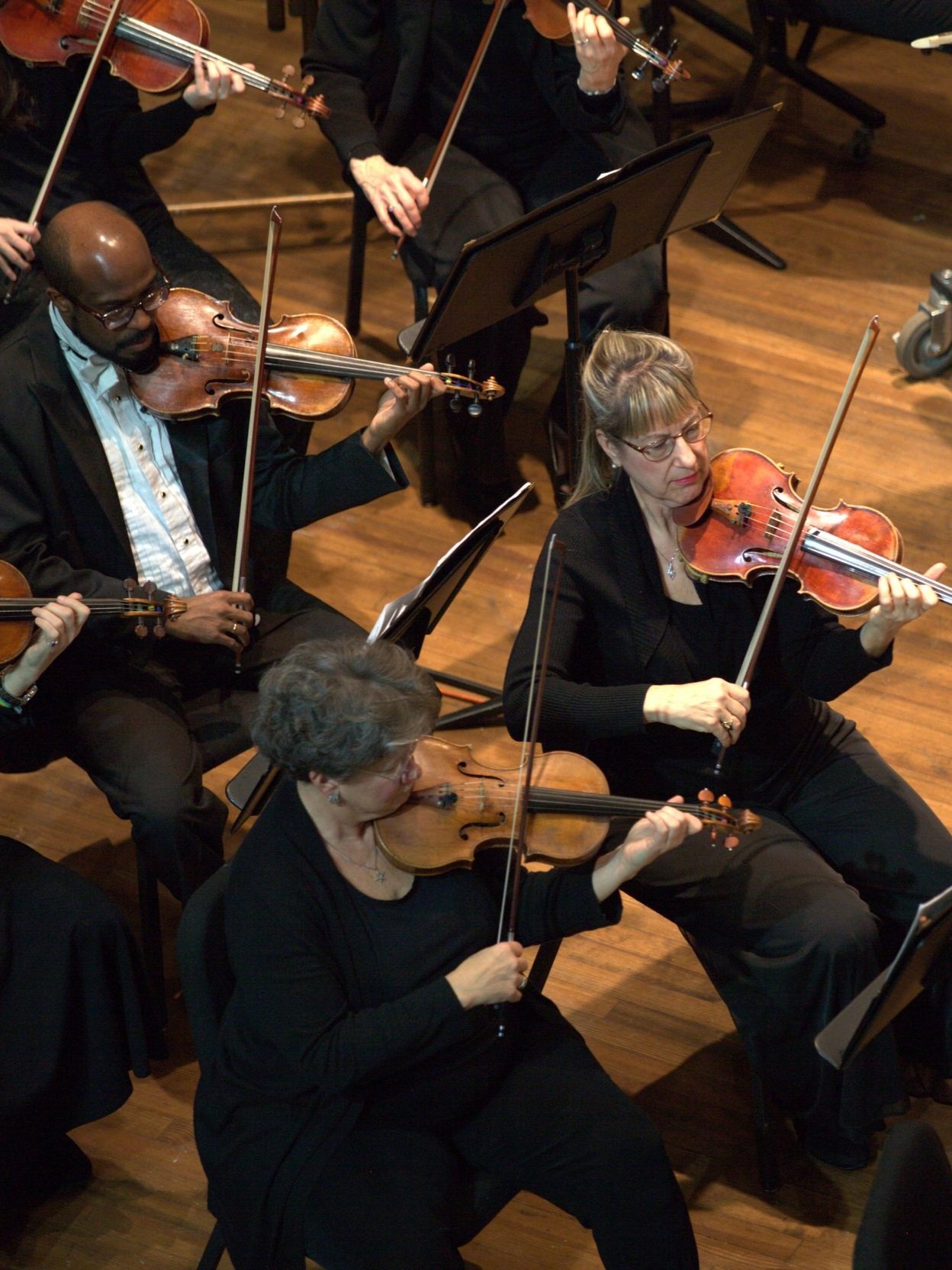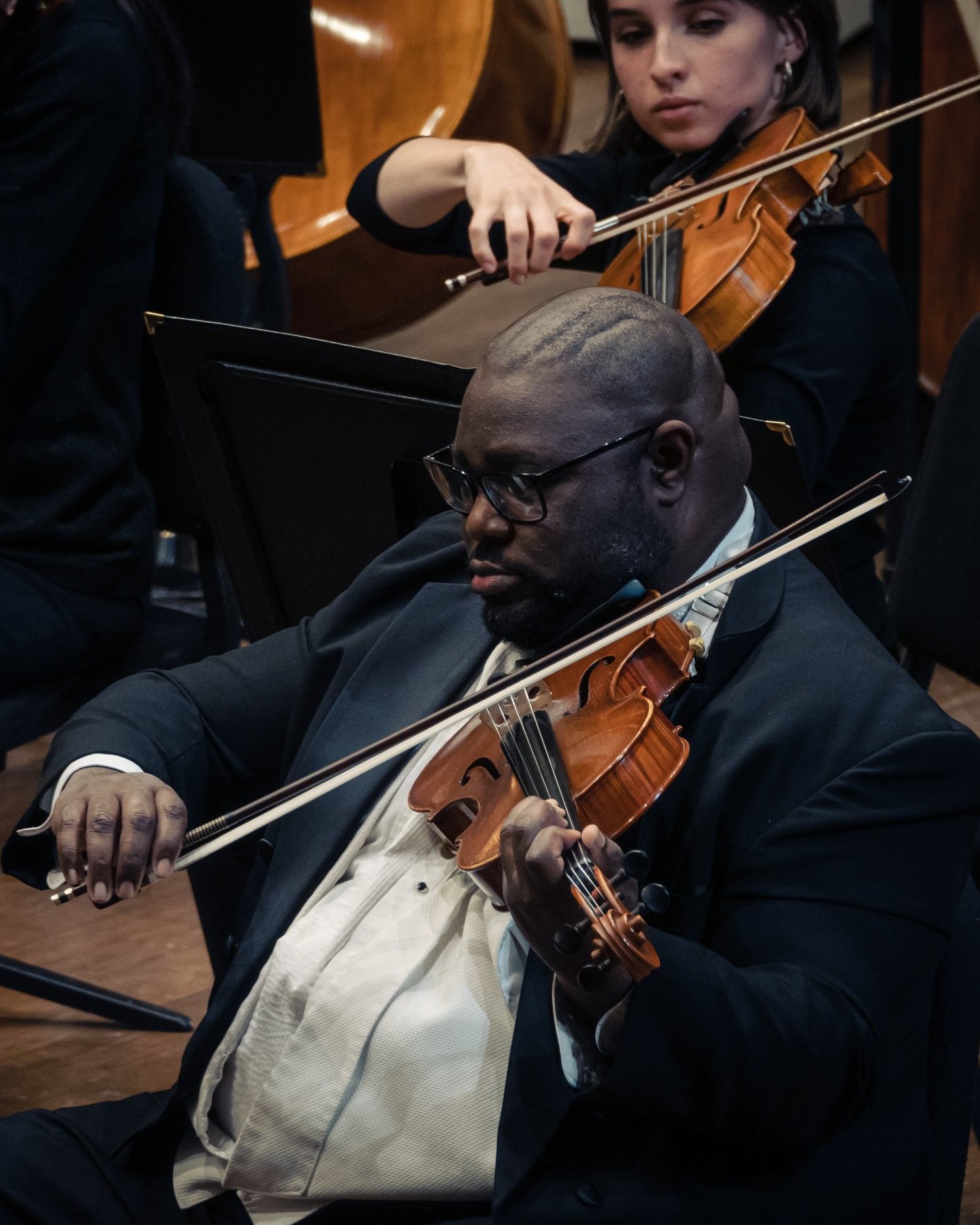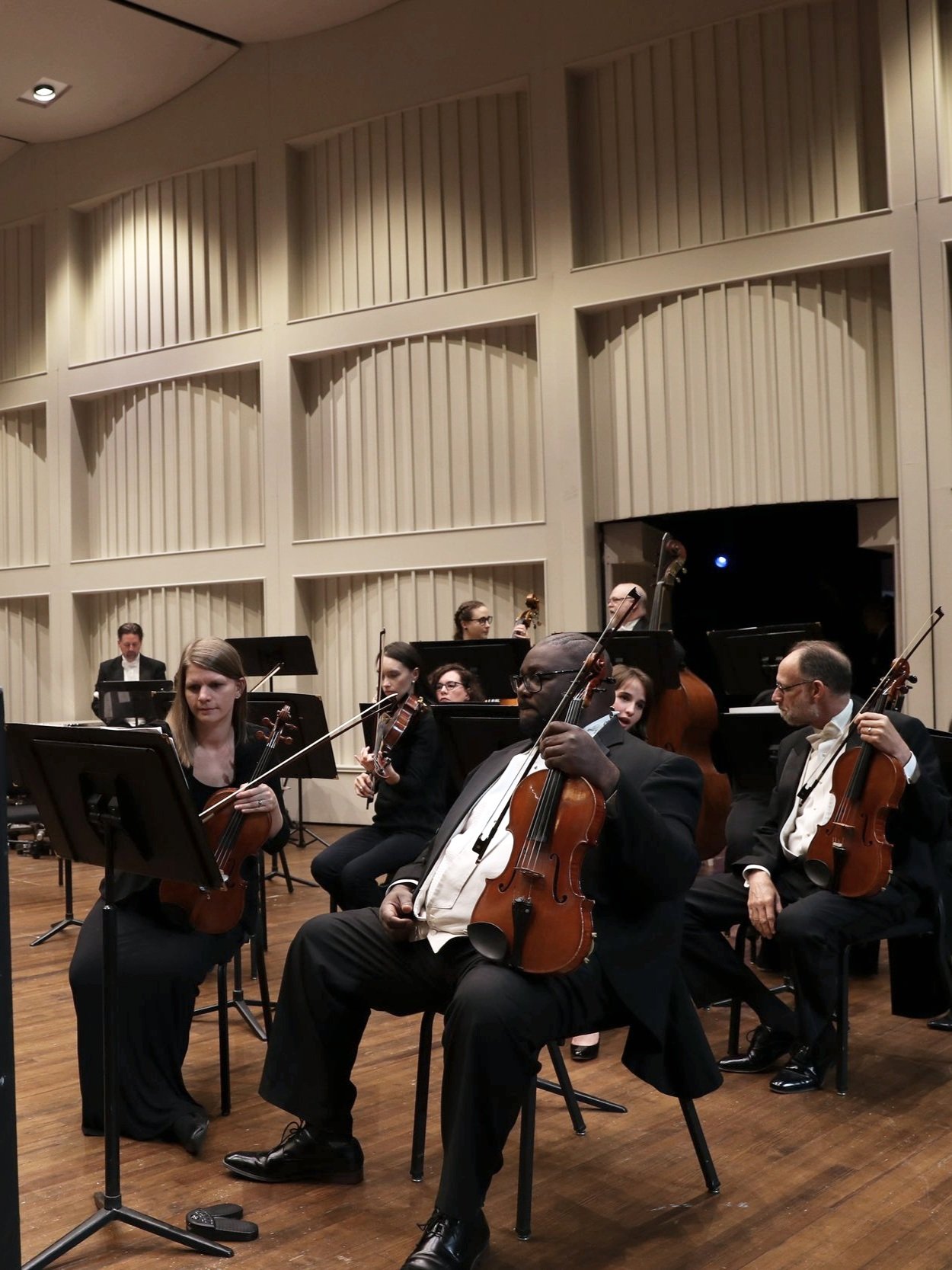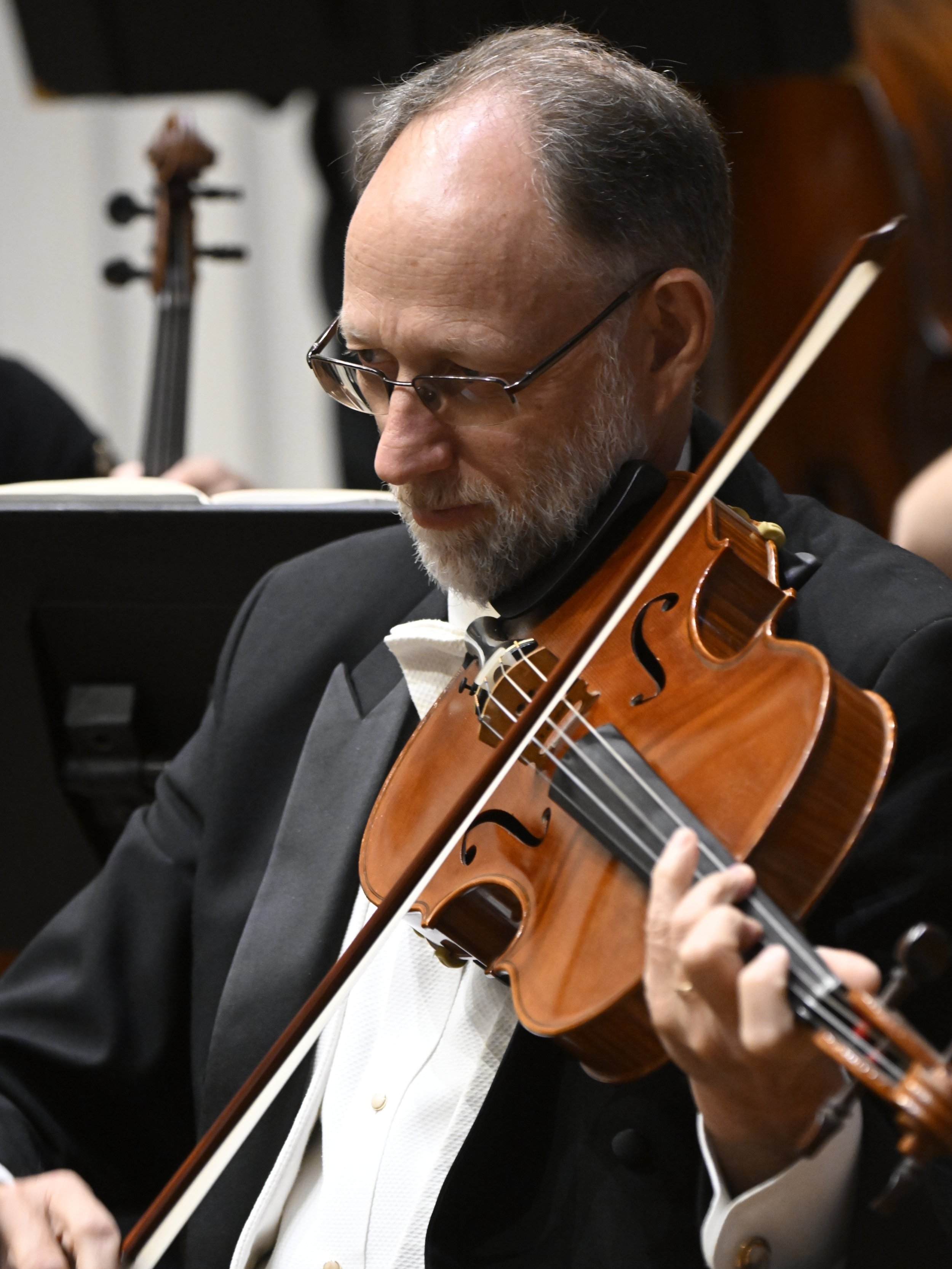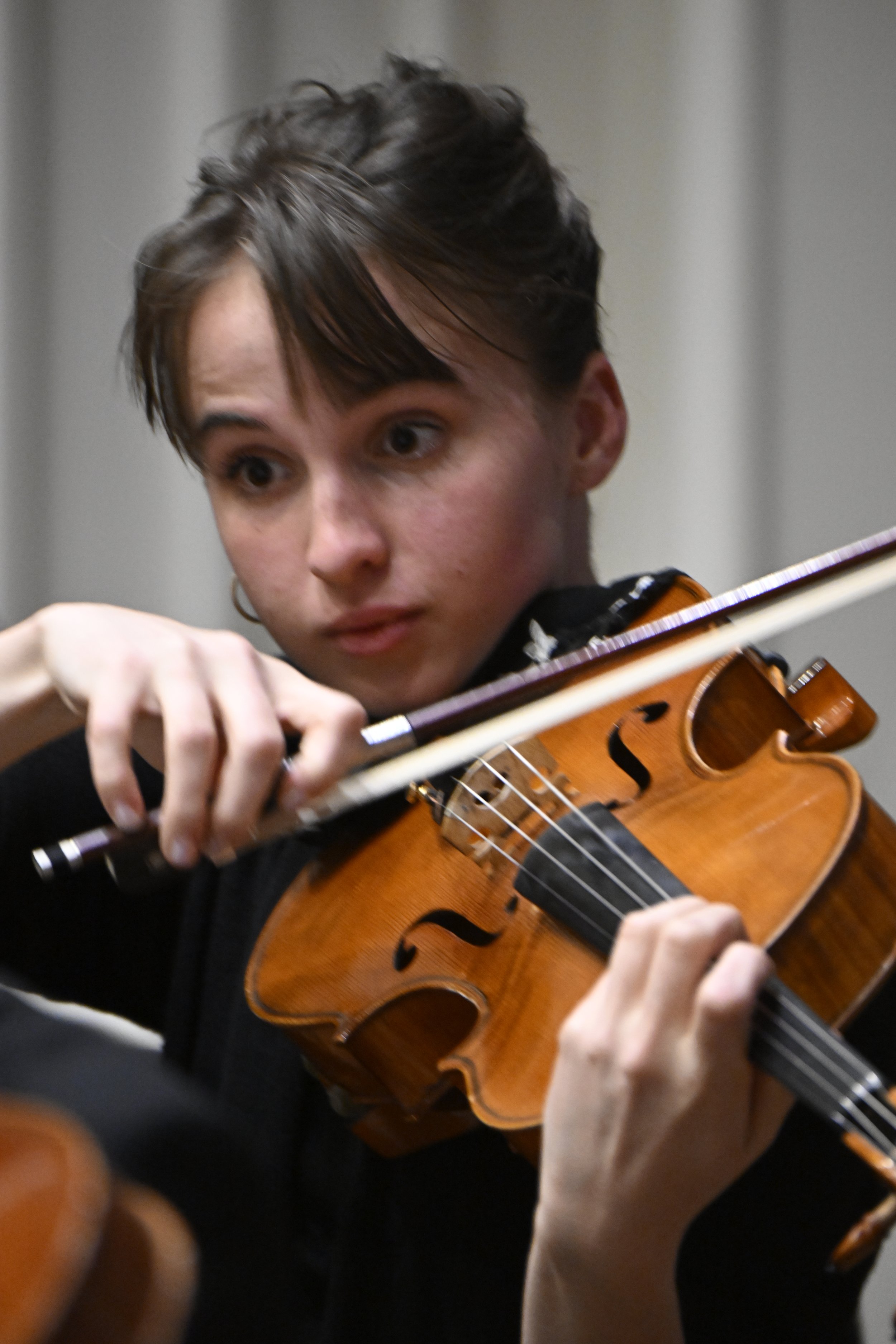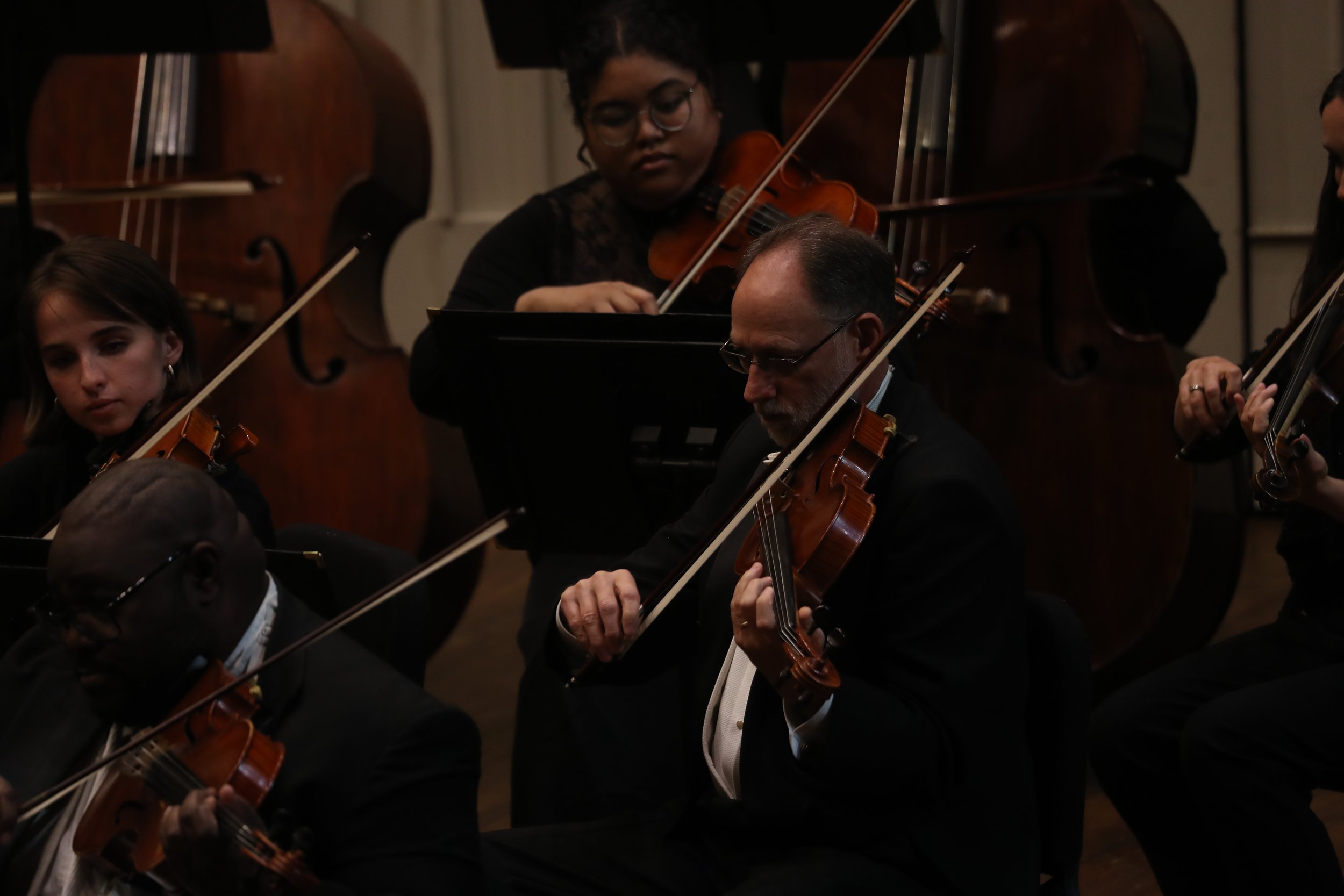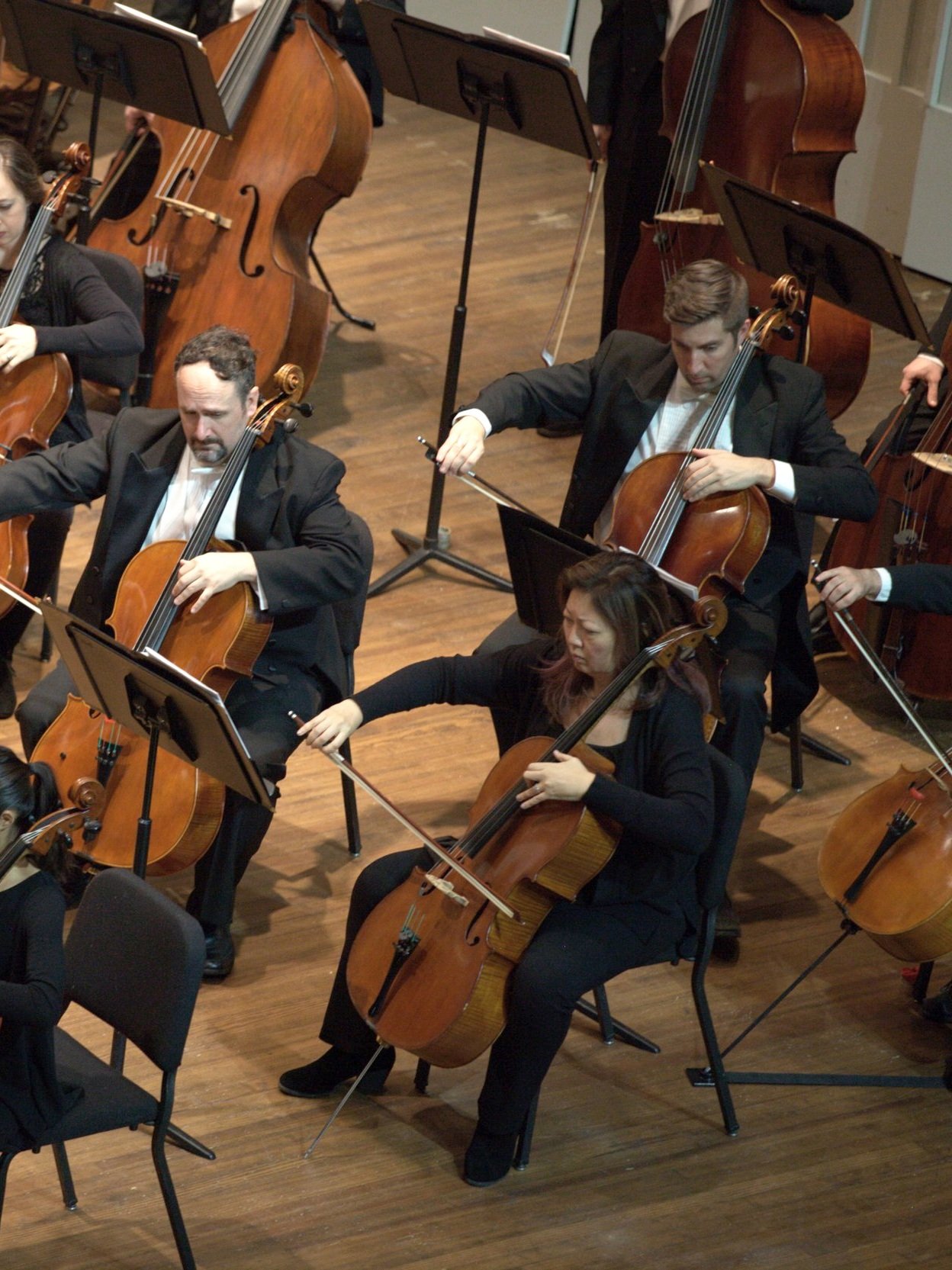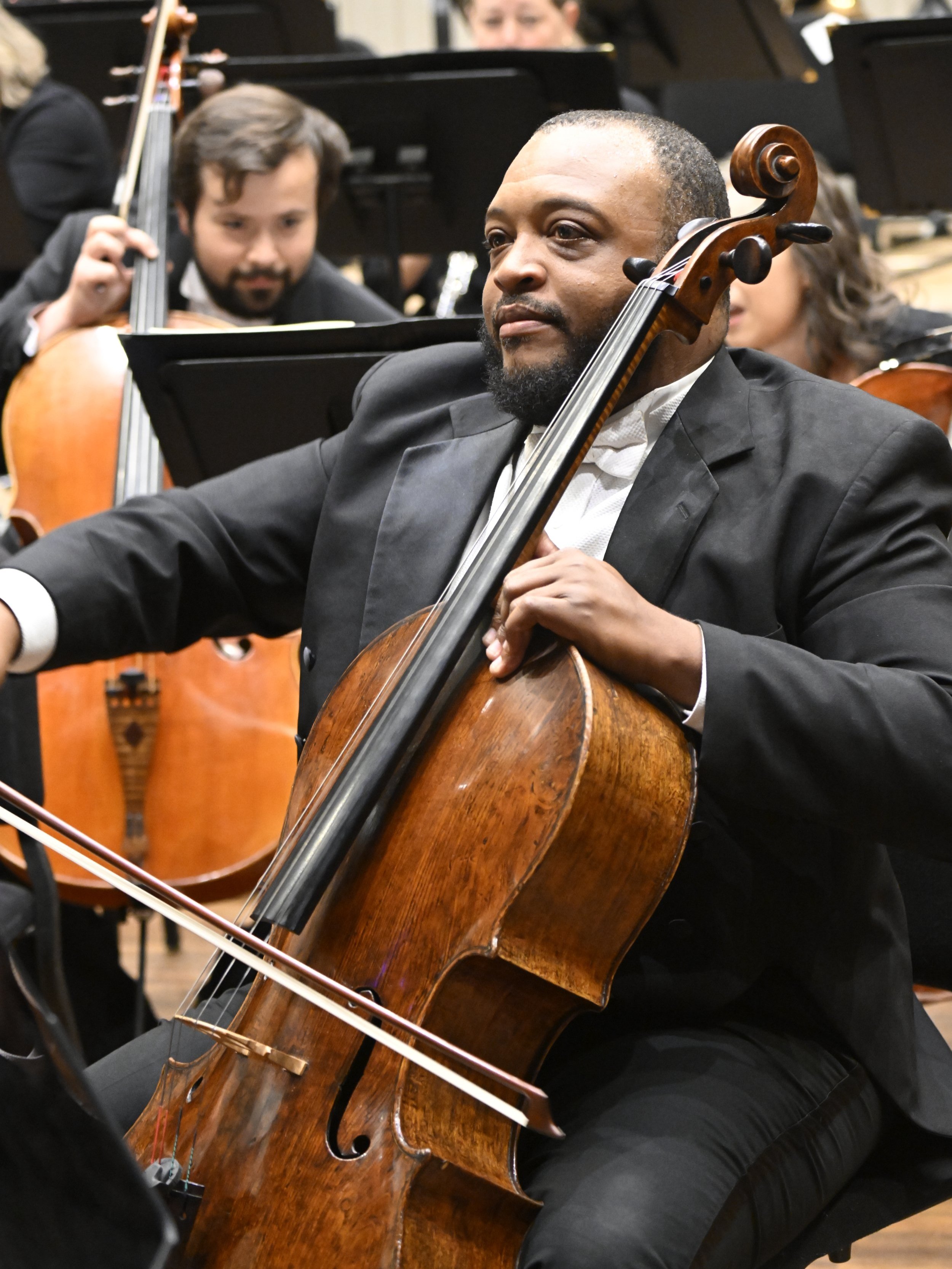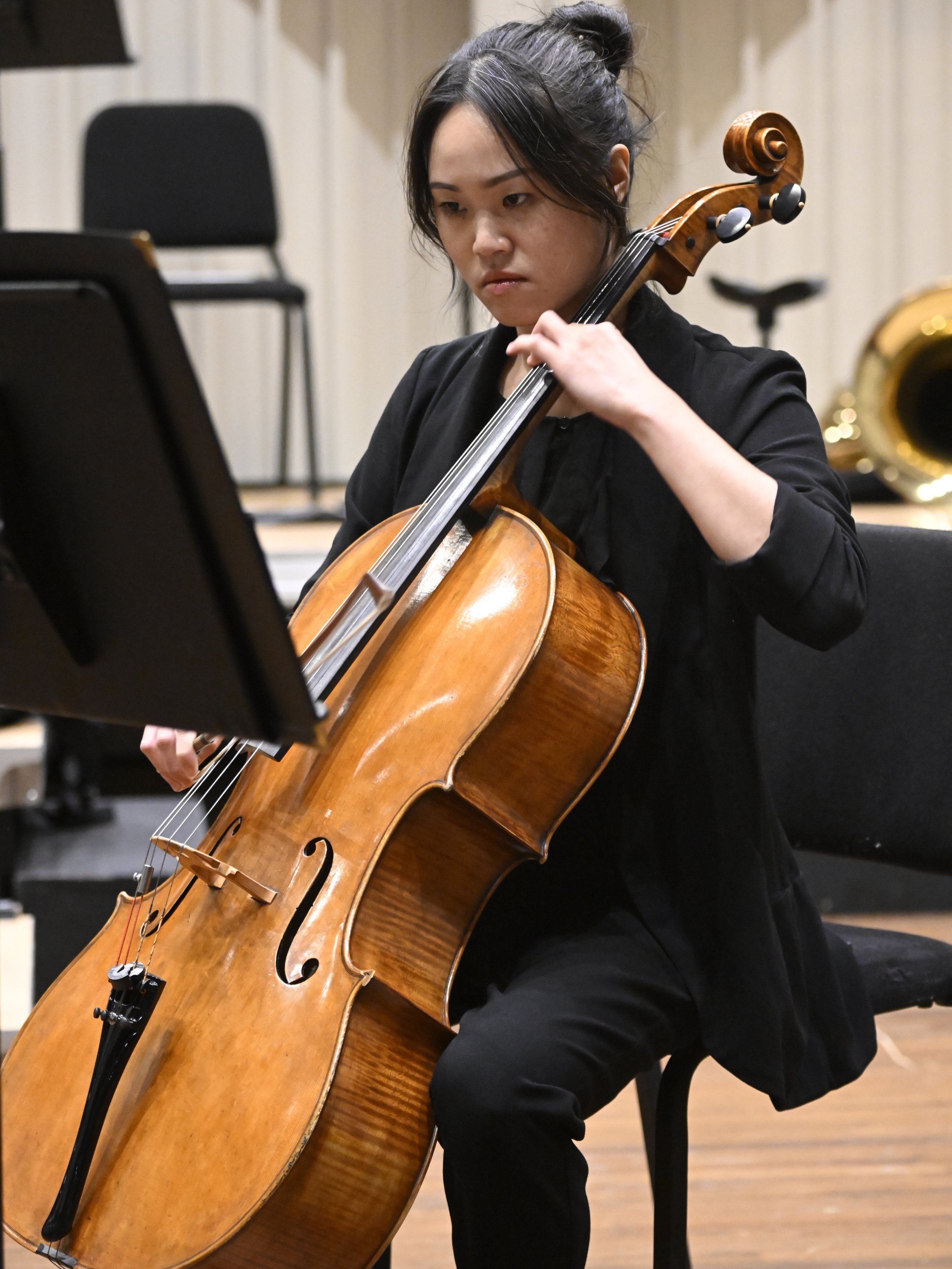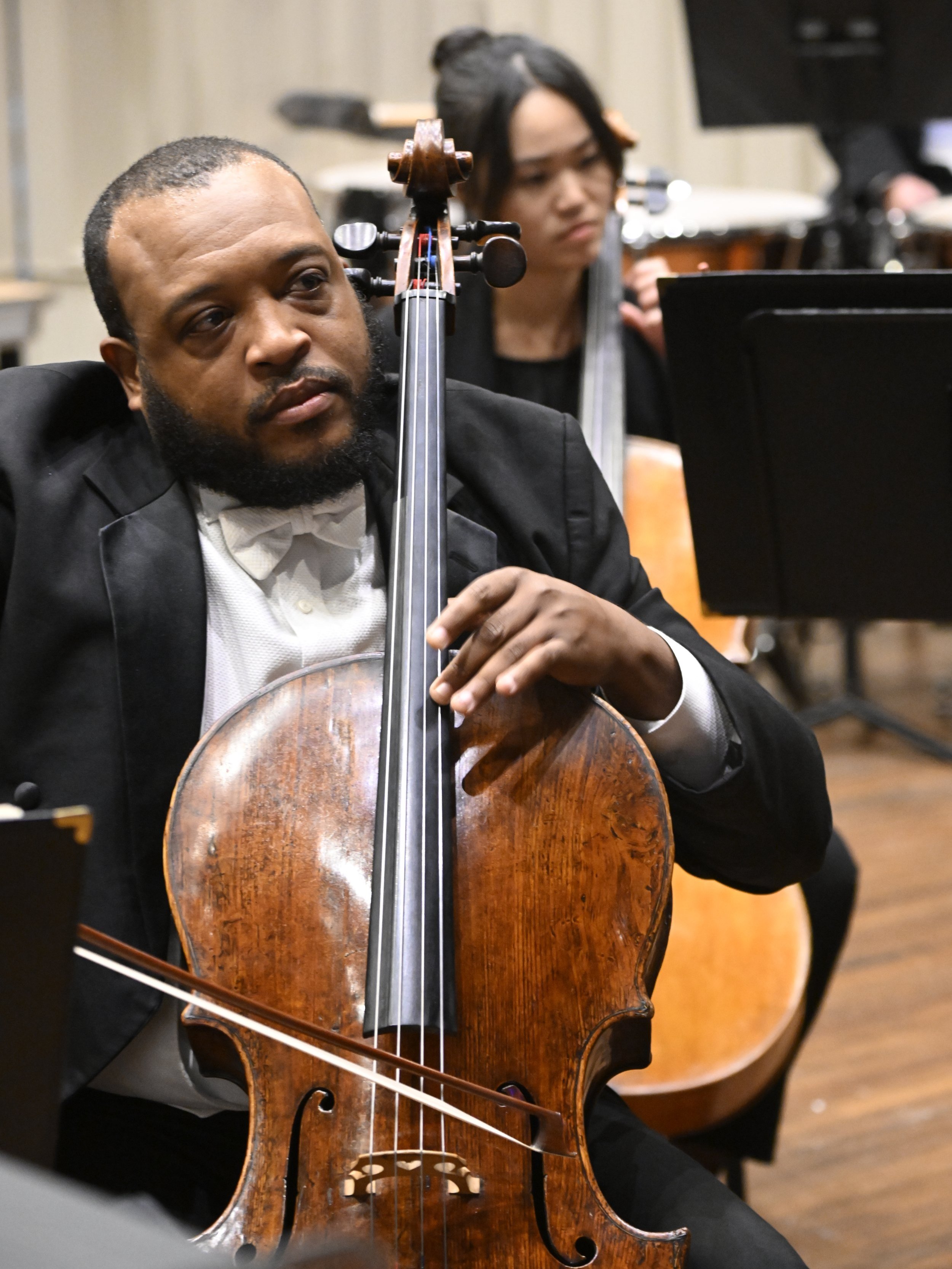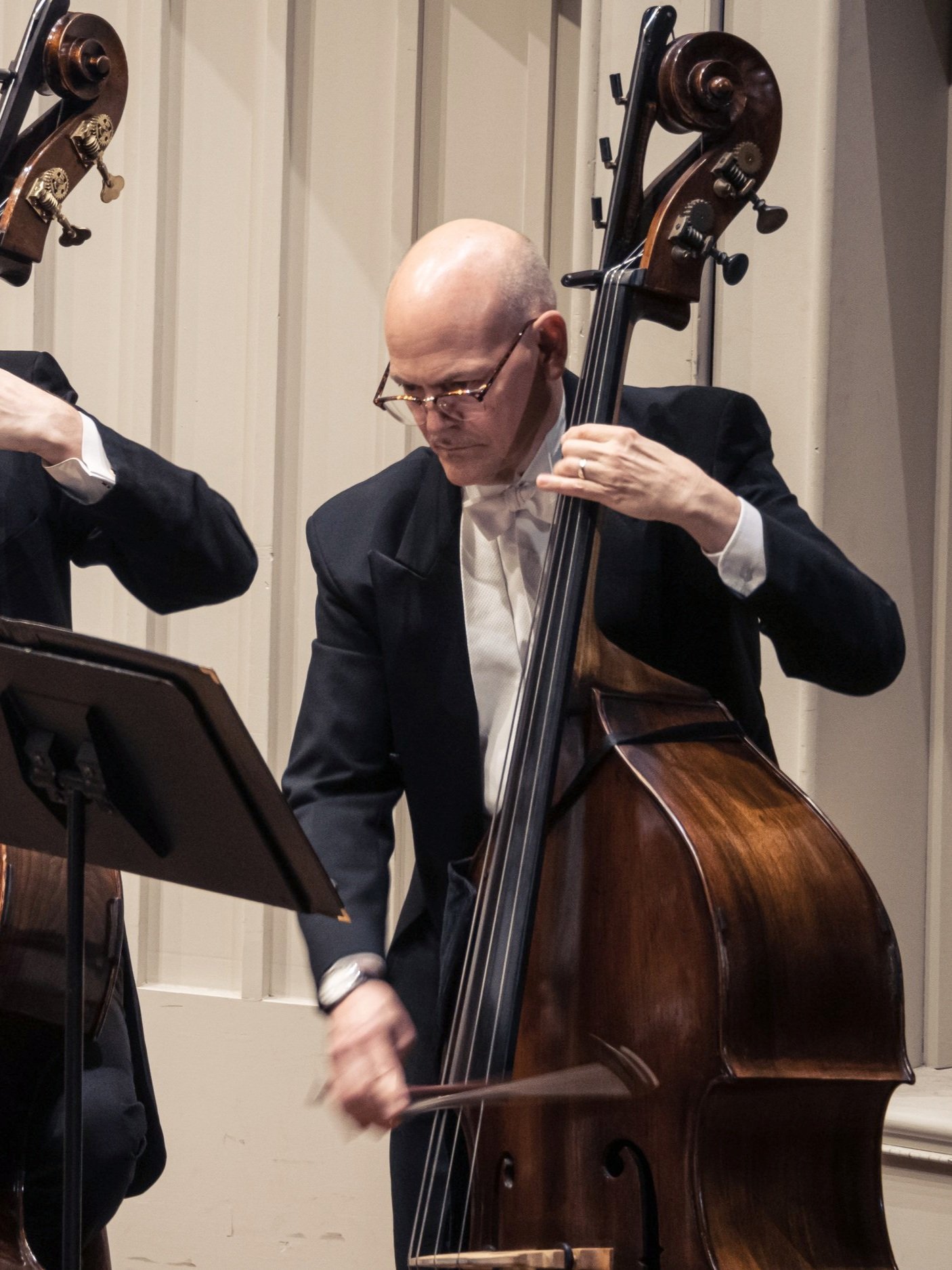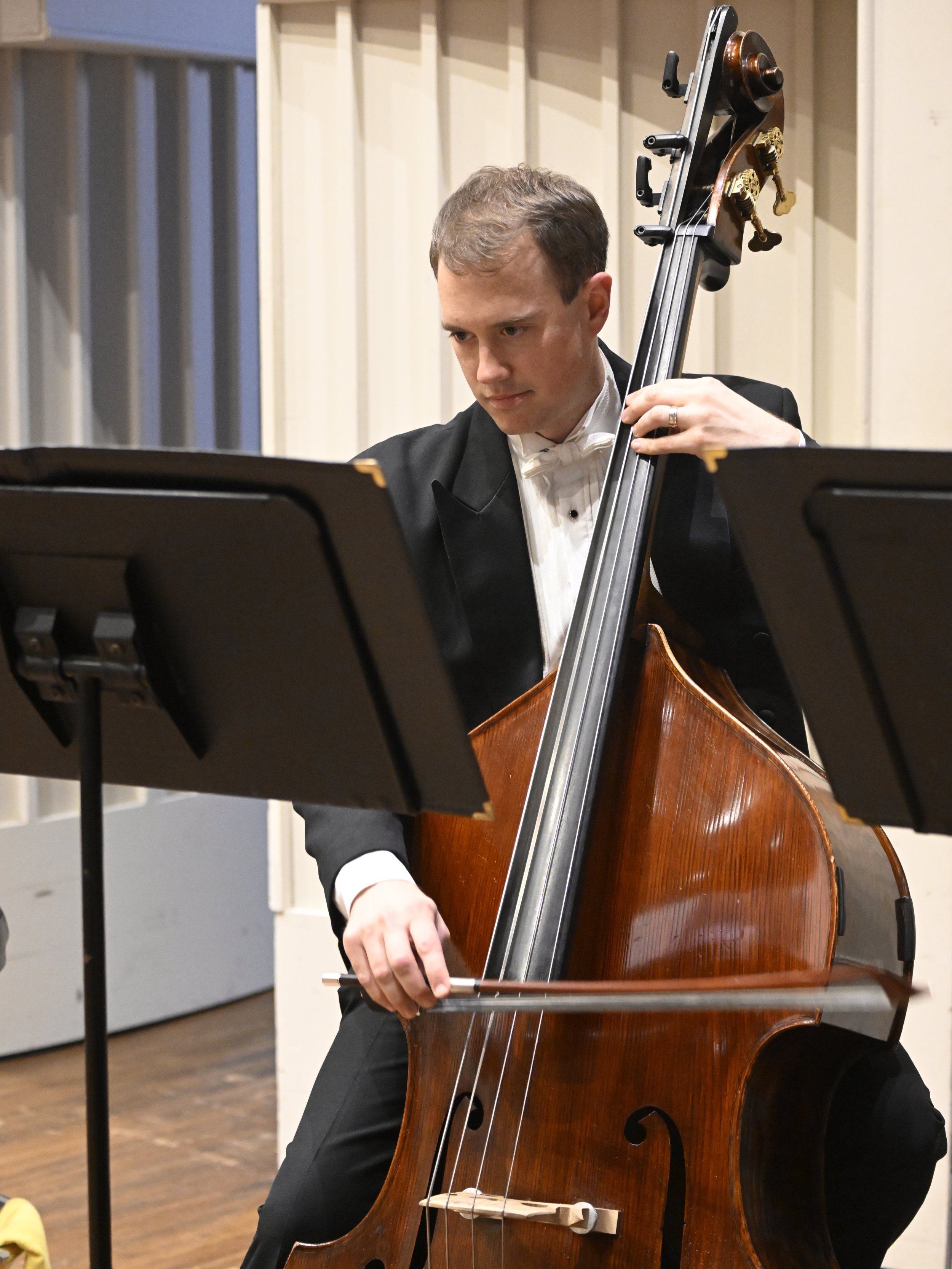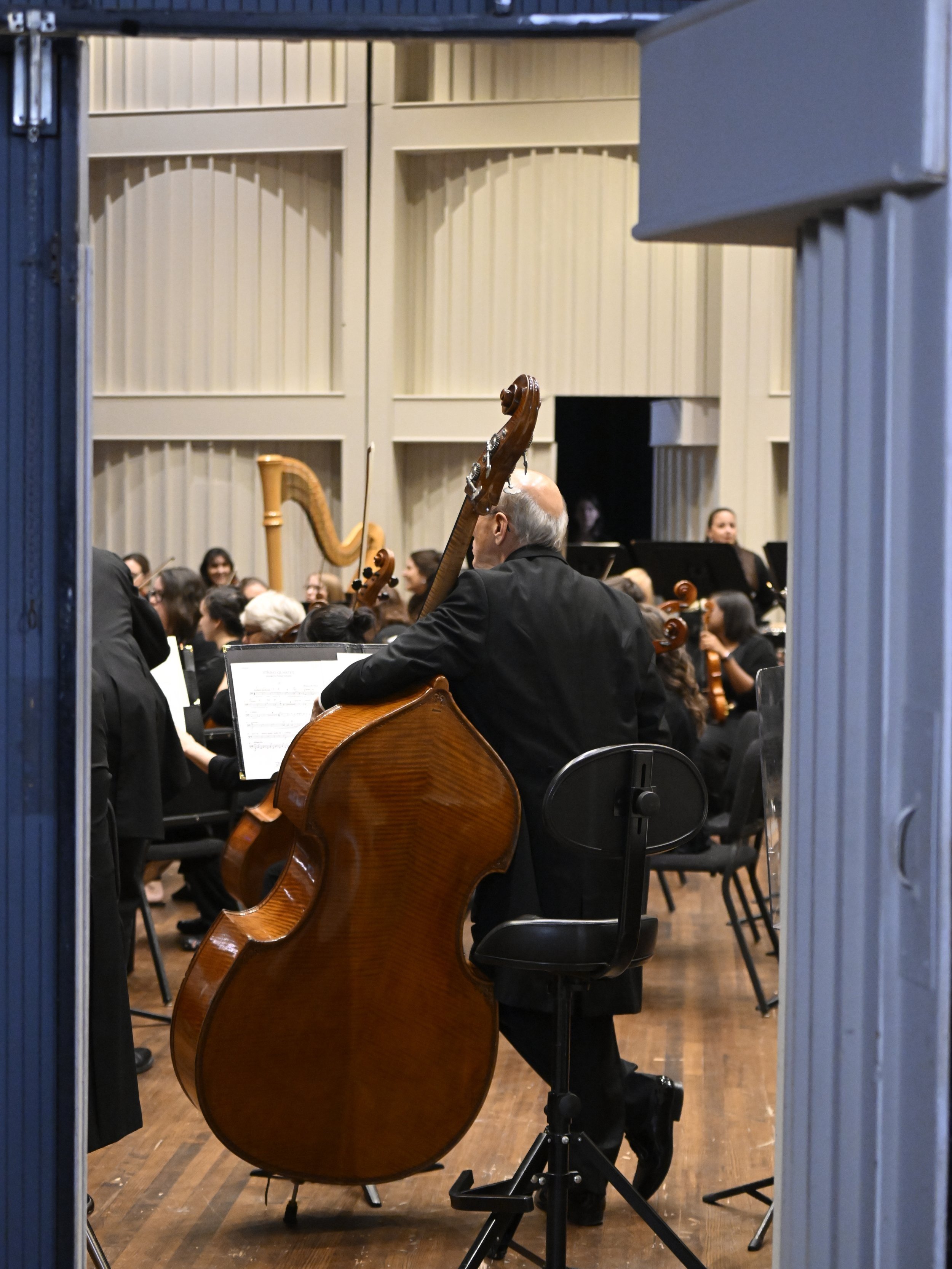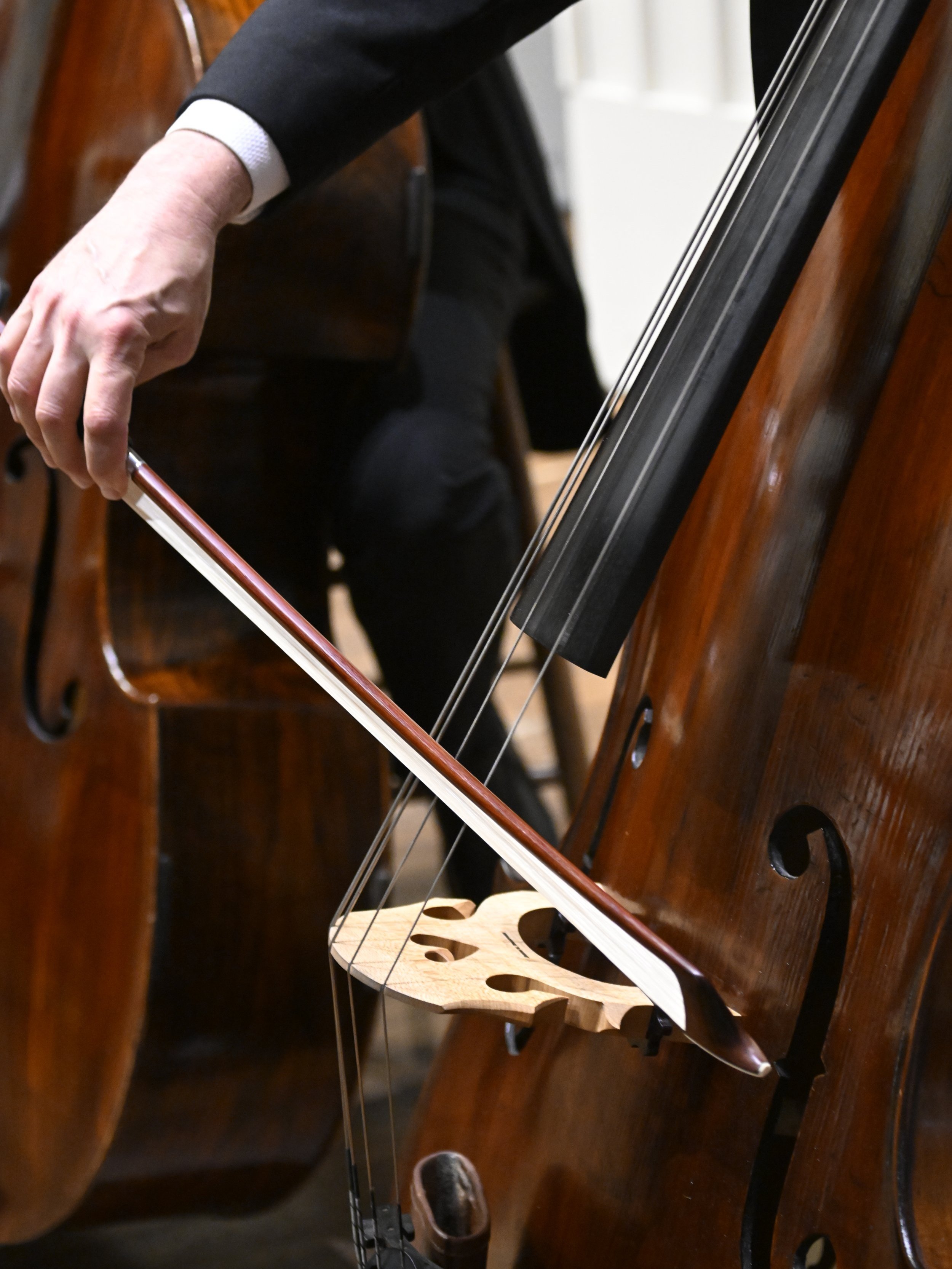Symphony 101: Instruments Of The Orchestra
by Courtney Oliver and Peter B. Kay
Unsurprisingly there are a fair number of our audience members that, at one time or another, played an instrument and so are very familiar with the types that make up an orchestra. We know, though, that not everyone is a former musician or is a regular attendee of symphony concerts. From your seat in the auditorium, it can be difficult to pick out the violins from the violas or the oboes from the clarinets. And while knowing the exact instrument producing a particular sound, it can enhance your experience to know that, yes, that high, floating note is coming from a piccolo rather than a flute. To assist in your endeavor to become more familiar with the instruments of the orchestra and their typical placement on the stage, we’ve prepared a visual guide to help you navigate each section.
Flutes & Piccolos
The highest, clearest sounding instruments in the woodwind family, the flutes and piccolos, are seated in the middle of the stage, directly in front of the conductor.
Oboes & English Horns
The oboe and its larger sibling the english horn are seated next to the flutes. The oboe is the first thing you hear when the full symphony tunes at the beginning of a concert.
Clarinets
Clarinets come in a variety of sizes, from the small and high- pitched E-flat, to the middle range B-flat, all the way down to the Bass Clarinet. They sit behind the flutes in the middle of the stage.
Bassoons
The bass instrument of the woodwind family, the reedy, almost growling nature of the bassoon is very recognizable. They sit next to the clarinets and behind the oboes.
Horns
The heroic sound of the horns is instantly recognizable. The bell (or opening) of the horn faces away from the audience, so they are usually seated toward the back of the stage.
Trumpets
Brilliant and brassy, the trumpets power over the orchestra. They are usually seated toward the rear or side of the orchestra, facing the conductor.
Trombones
Trombones are the only family of brass instruments that use a slide to change pitch instead of a valve. Like the trumpets, they are usually seated behind the rest of the orchestra.
Tuba
The tuba is the largest and deepest brass instrument. The bell faces upward toward the ceiling. You can usually spot the tuba between the trombones and the basses.
Timpani & Percussion
Percussion is anything that you can strike or shake to make sound. The timpani (also called kettle drums) has been in the symphony for centuries. They are usually located behind or to the side of the rest of the orchestra. Other percussion instruments have slowly joined over the years as composers look for more colorful sounds.
Harp
Although not always a part of the symphony, the harp adds beautiful, sweeping colors to the orchestral sound. The harp is usually seated near (or even in) the violin section.
Violins
The highest instruments in the strings family, the violins are the largest group on stage. They are typically divided into first and second violins and are seated immediately to the conductor's left.
Violas
The violas are slightly larger and deeper sounding than the violins. They sit in the middle of the stage in front of the flutes or to the conductor's immediate right.
Cellos
The cellos have an enormous range, sometimes playing the bass line and sometimes the high melody. Like the violas, the cello section is usually seated to the conductor's right.
Basses
The largest and lowest instrument in the string family, the basses are so big that musicians typically stand to play them. They are usually positioned behind the cellos and near the tuba.
A Typical Stage Layout
While the positioning of some of the instrumental sections may change slightly depending on the pieces being performed and the corresponding instrumentation, this typically wehre you can find each instrument during a Spartanburg Philharmonic concert.
A Typical pit Layout
While you’ll typically see the Spartanburg Philharmonic on the stage, there are occasions, like when we perform The Nutcracker with Ballet Spartanburg, when the orchestra is in the pit in front of the stage. These layouts can vary depending on the pieces being performed, the instruments required, as well as the preferences of the conductor.
If you’re joining us for The Nutcracker, we encourage you to stop by the pit for a birds-eye view of the orchestra in action (warm-ups are the perfect time to do this) and get a bit of a closer view of each instrument.
Take A Deeper Dive
Don’t just take our word for, here’s what our orchestra friends and musicians are sharing on the ‘net.

